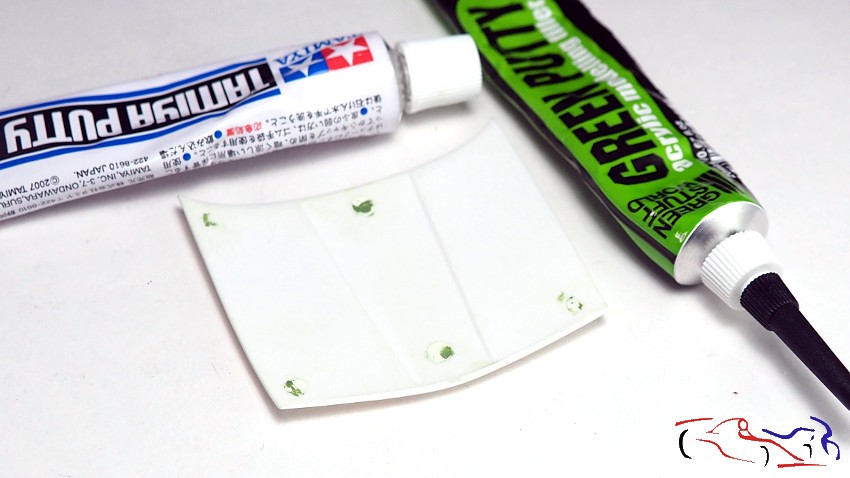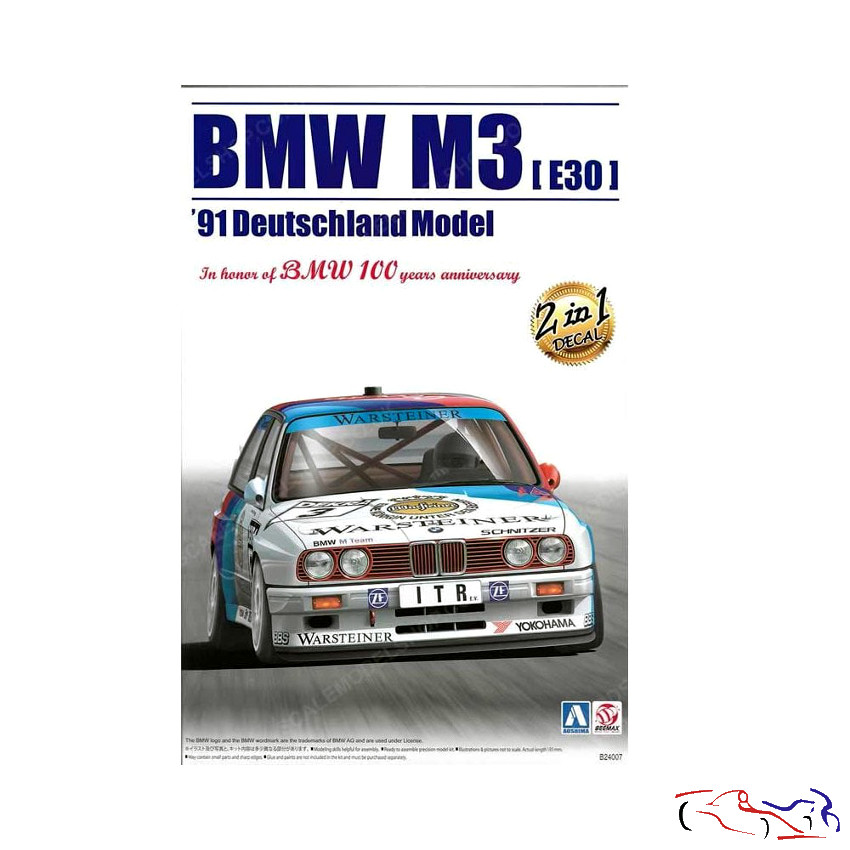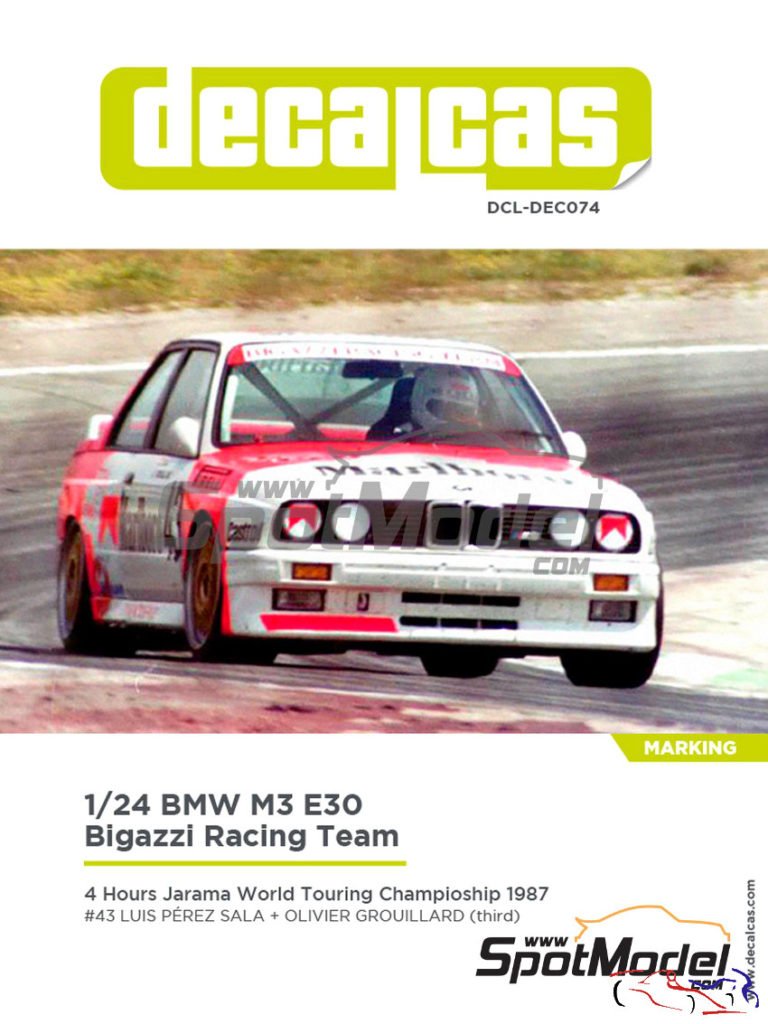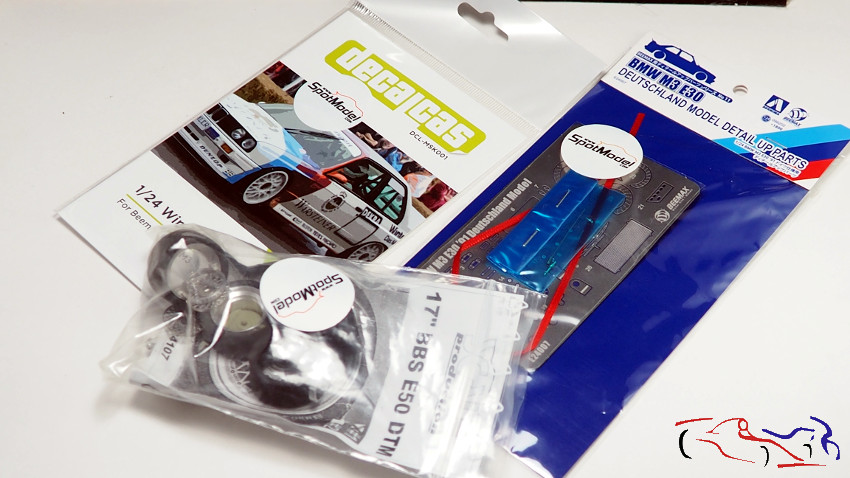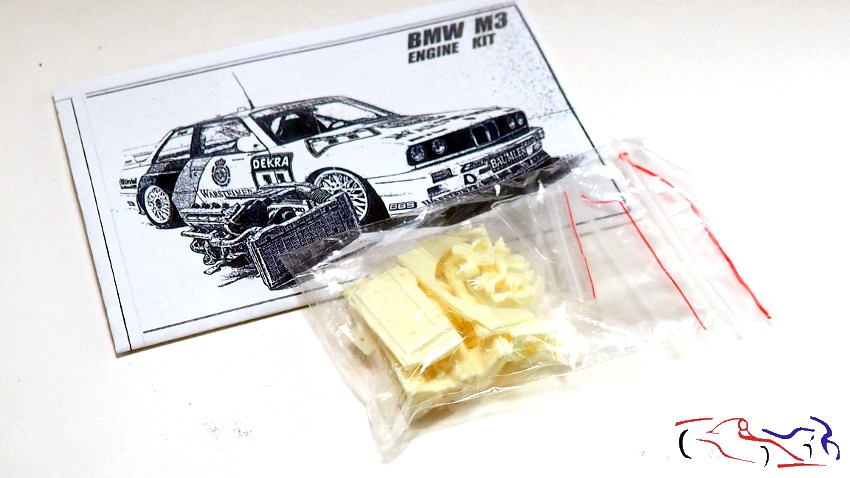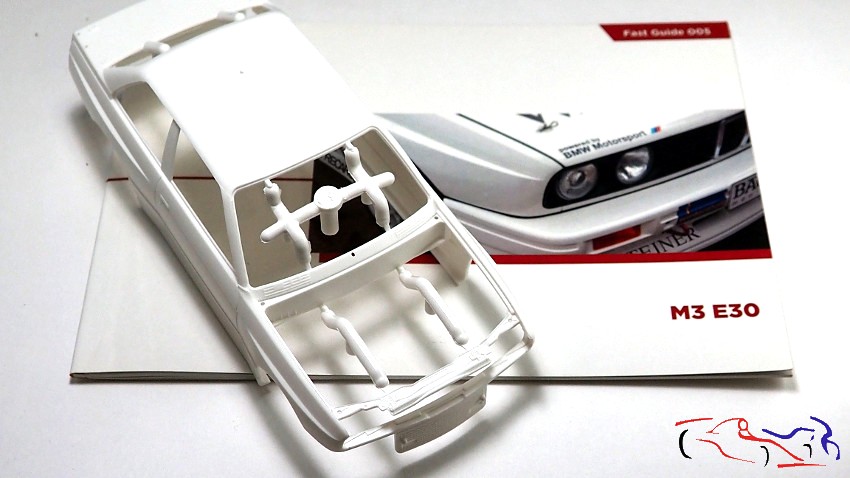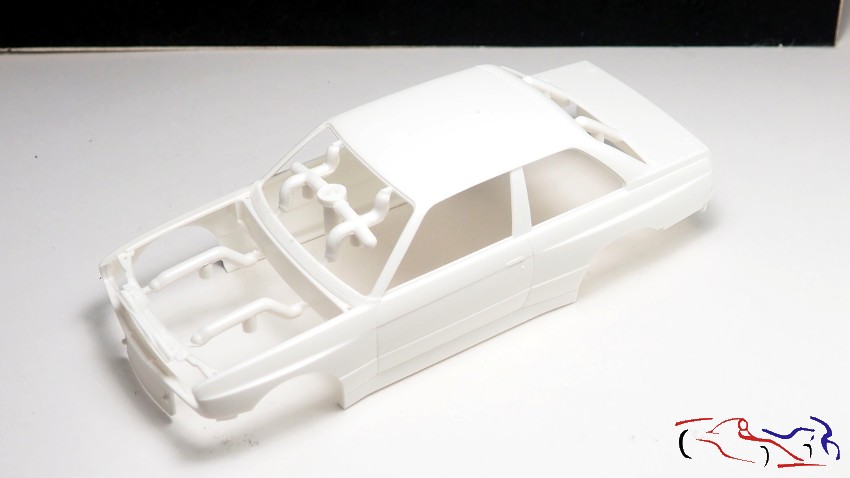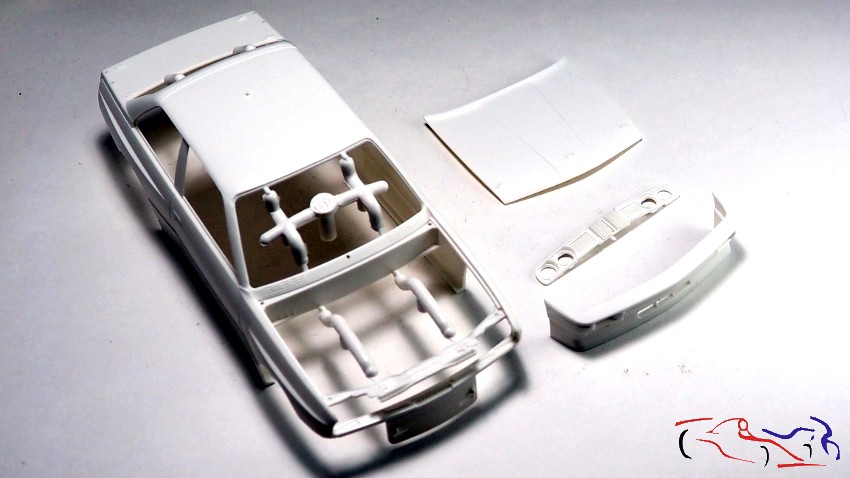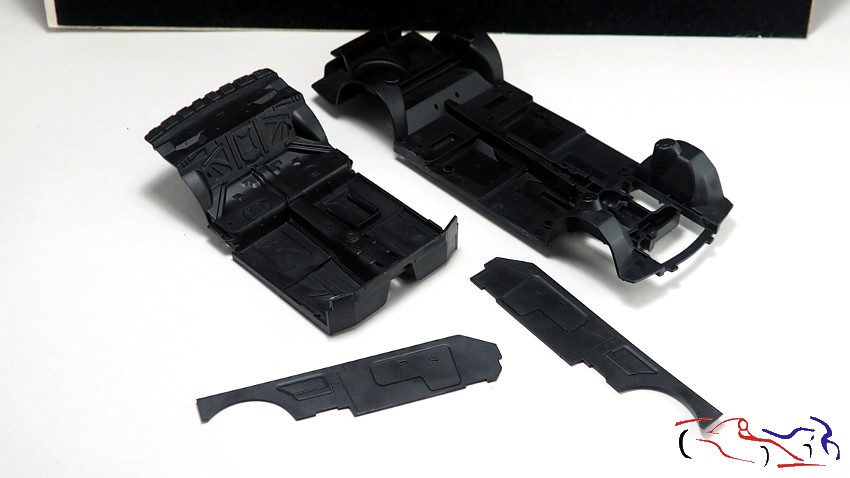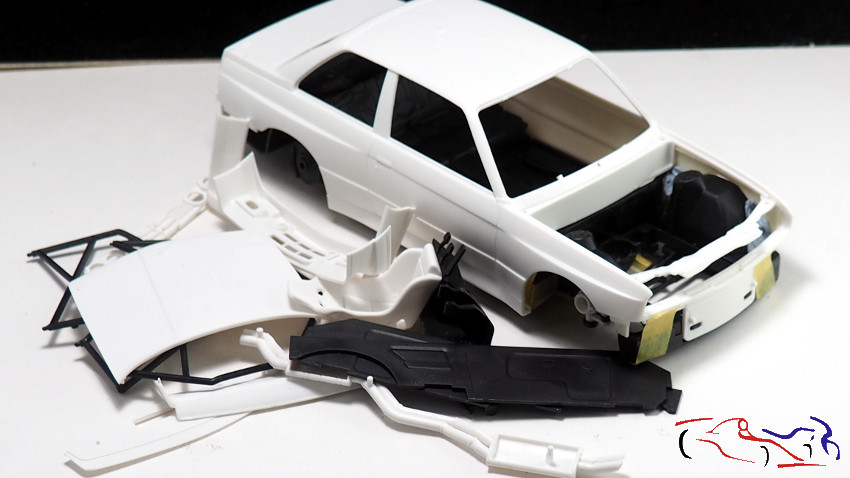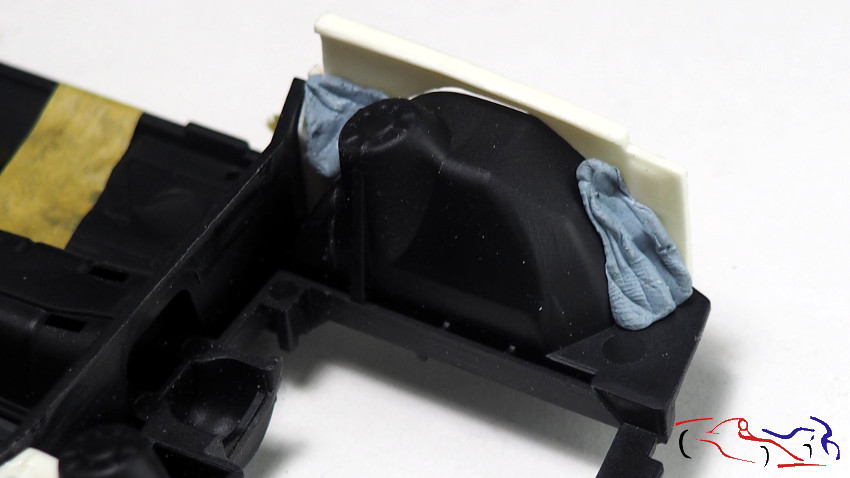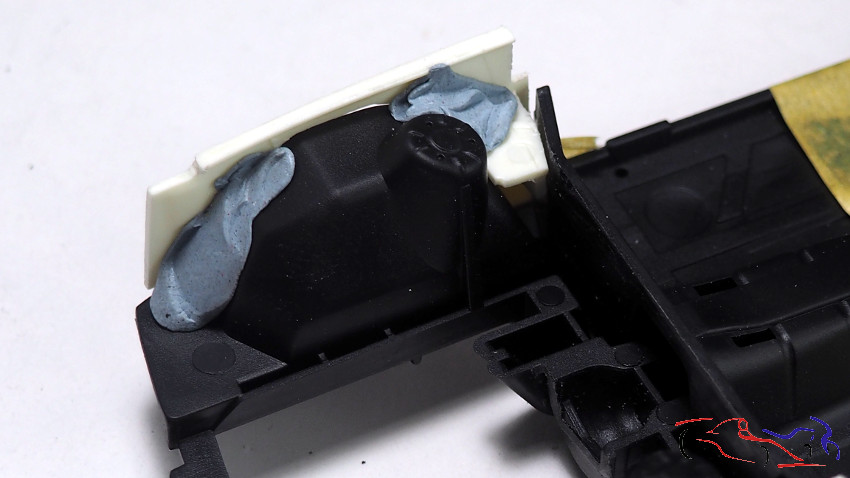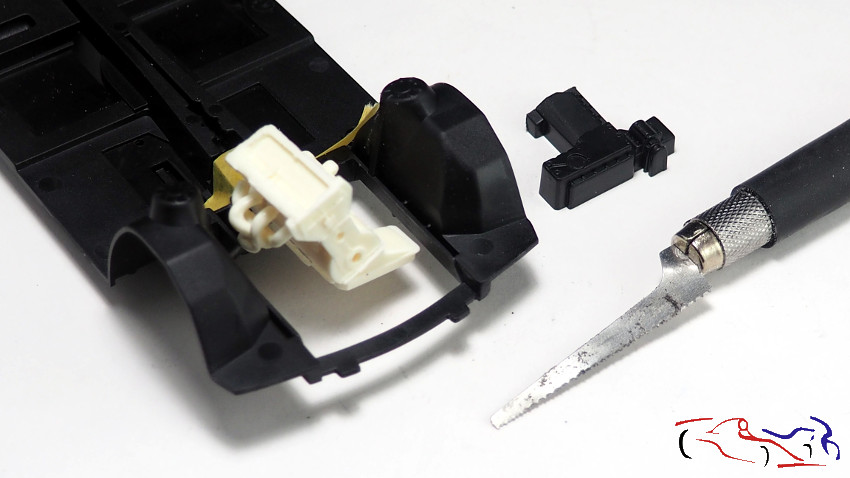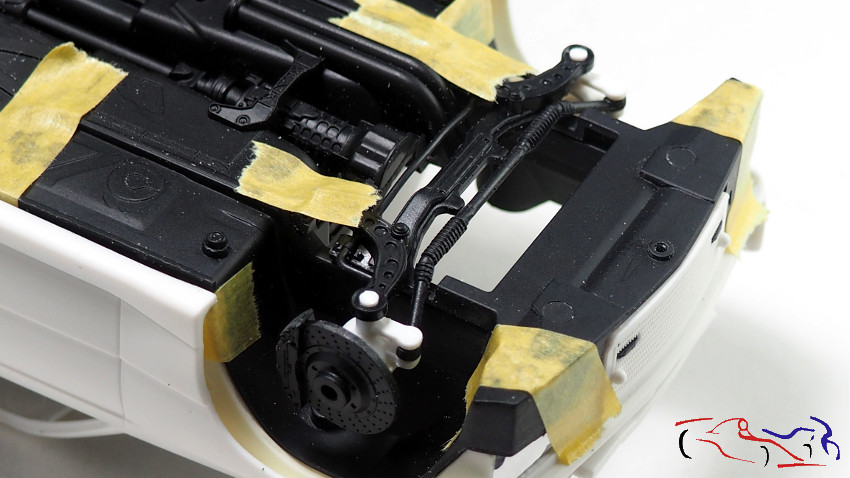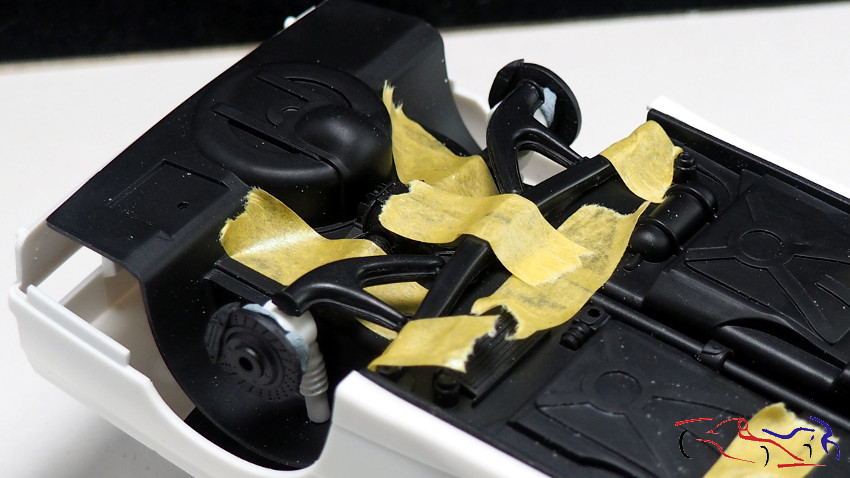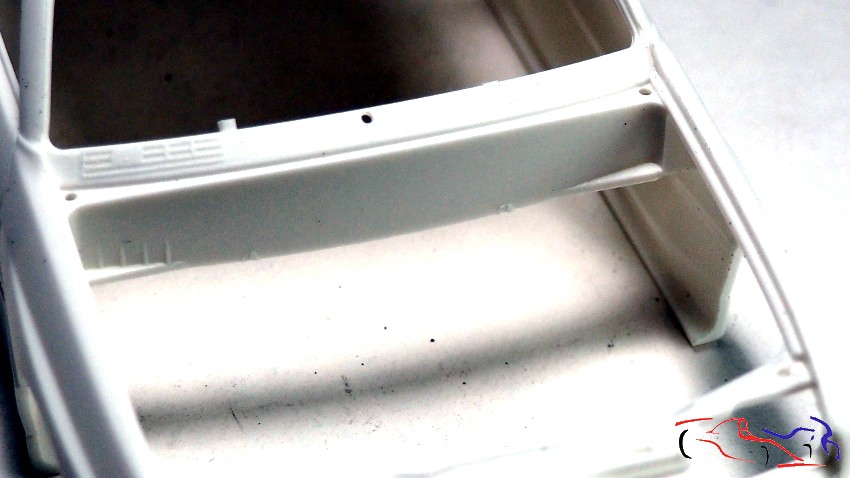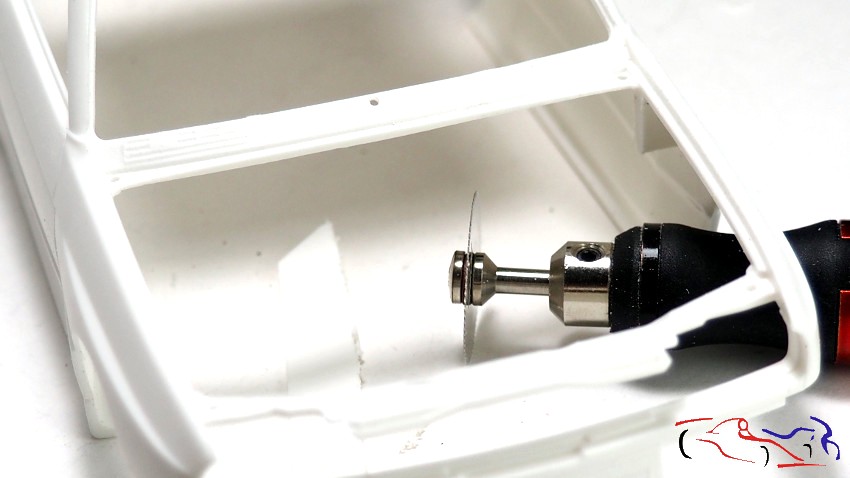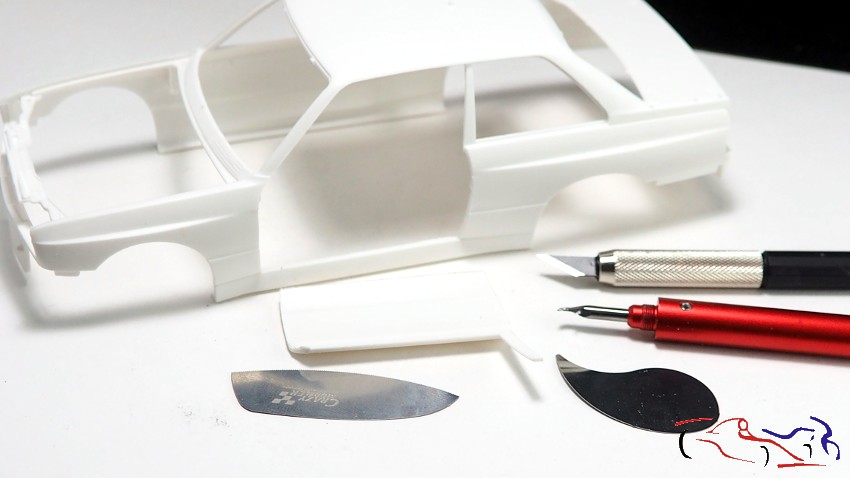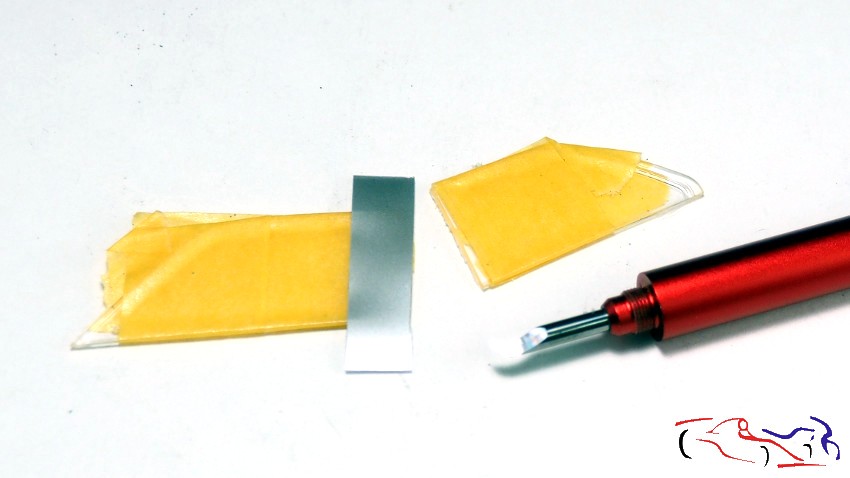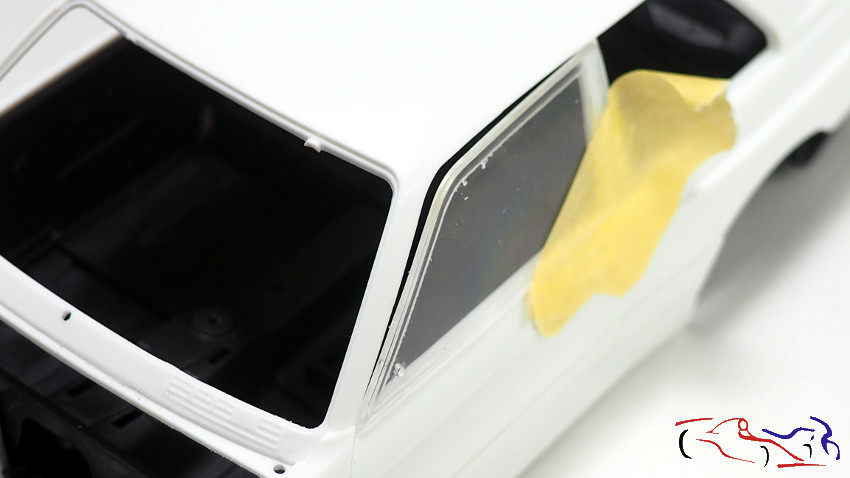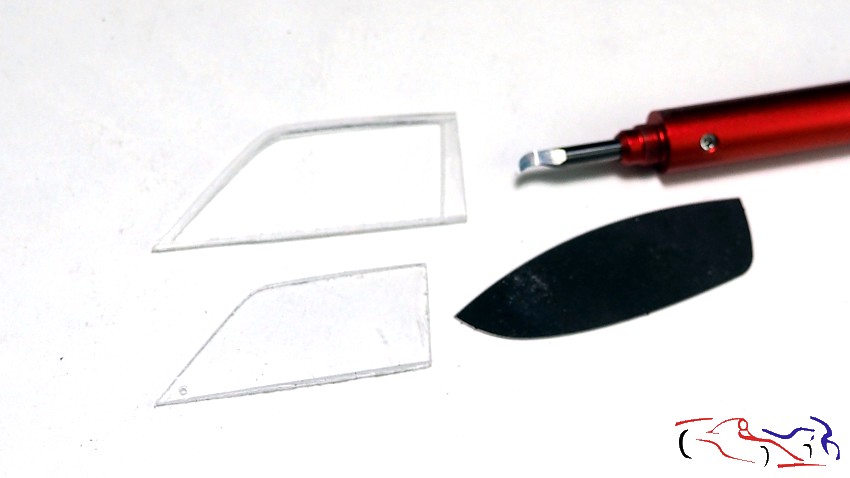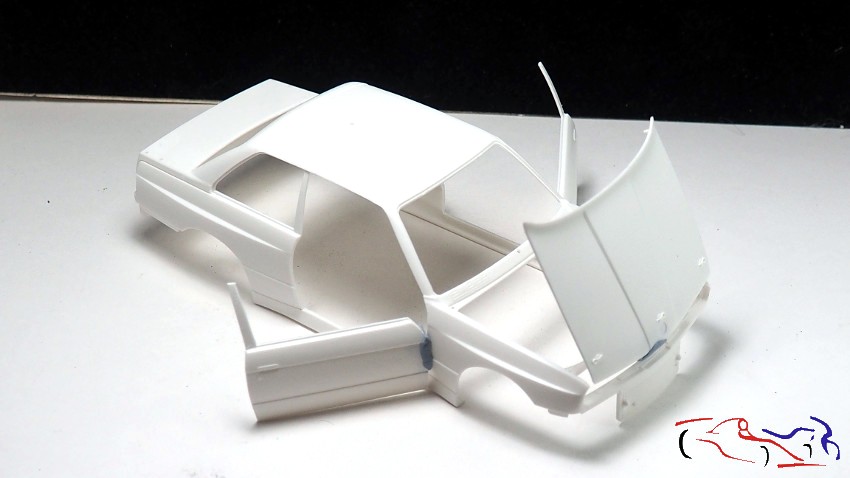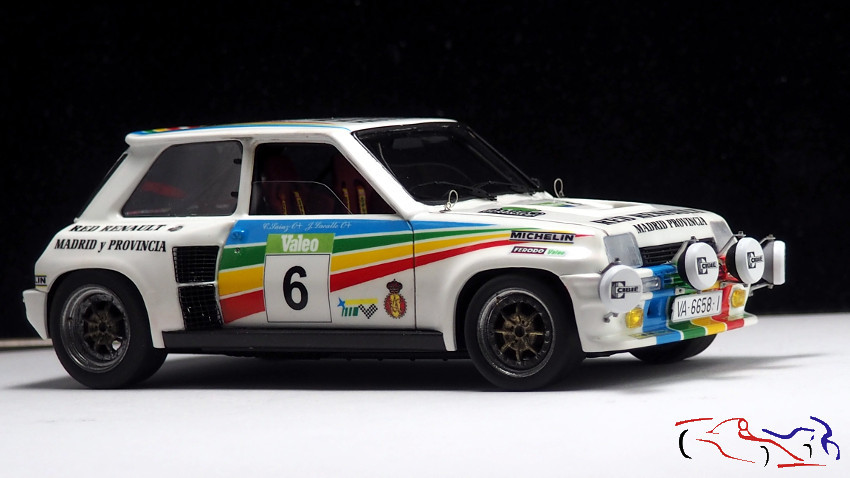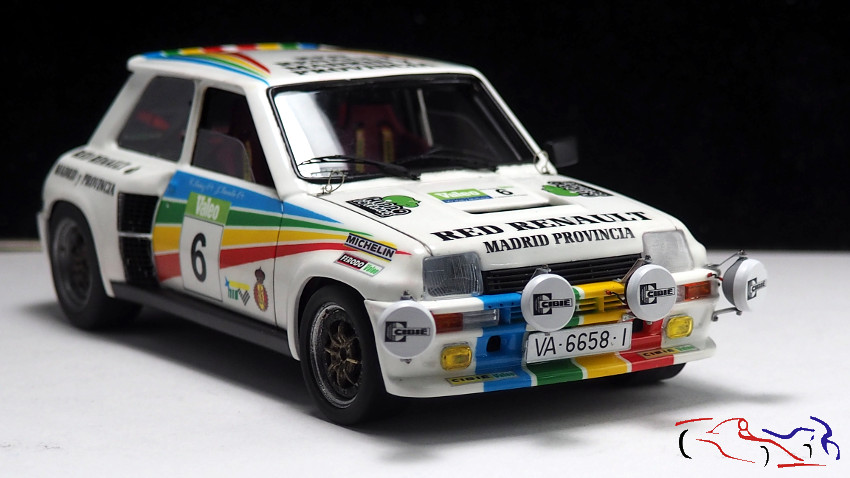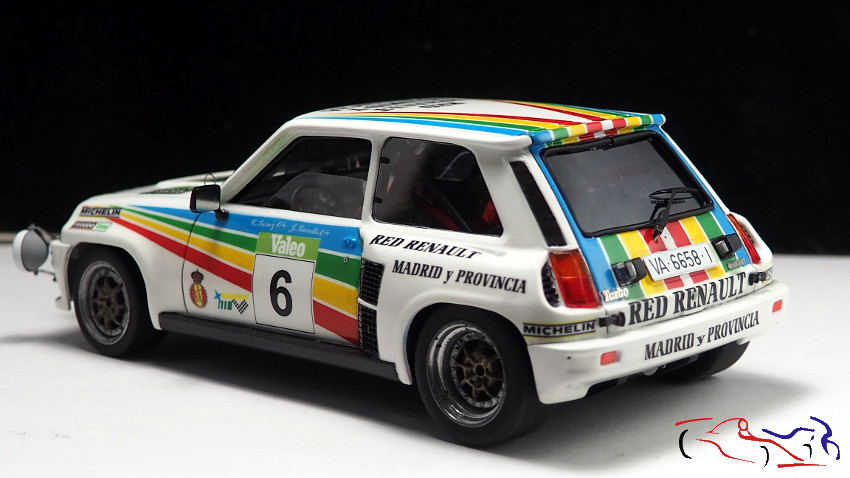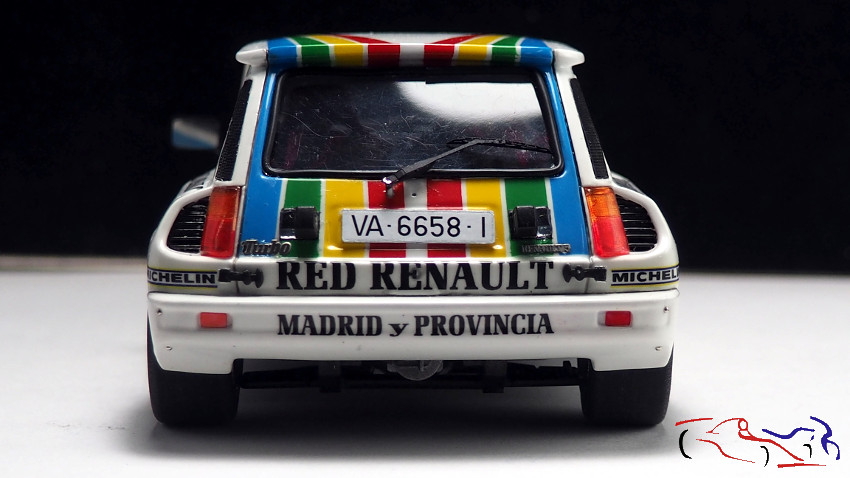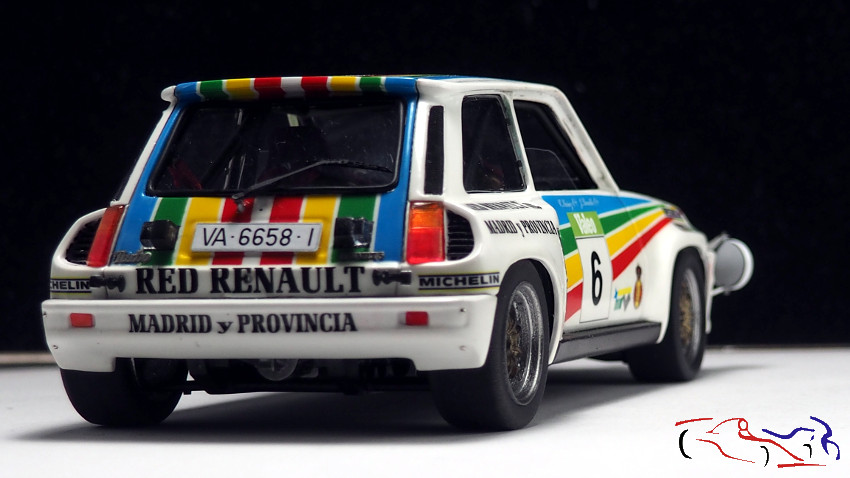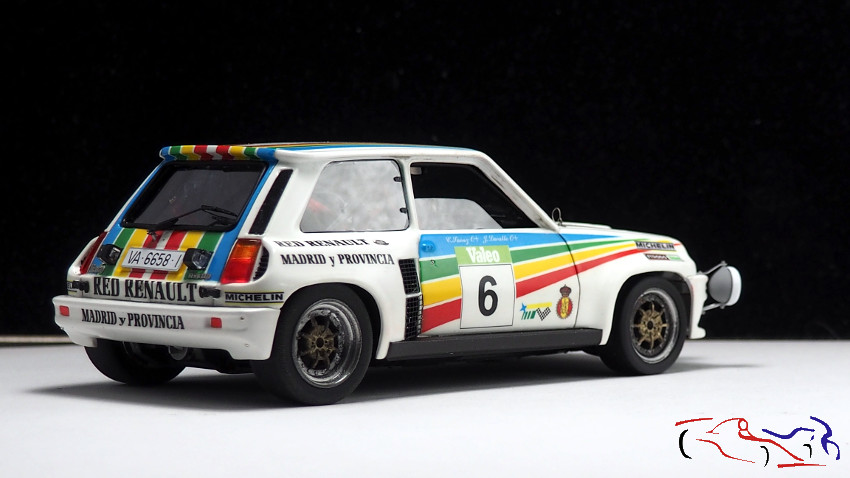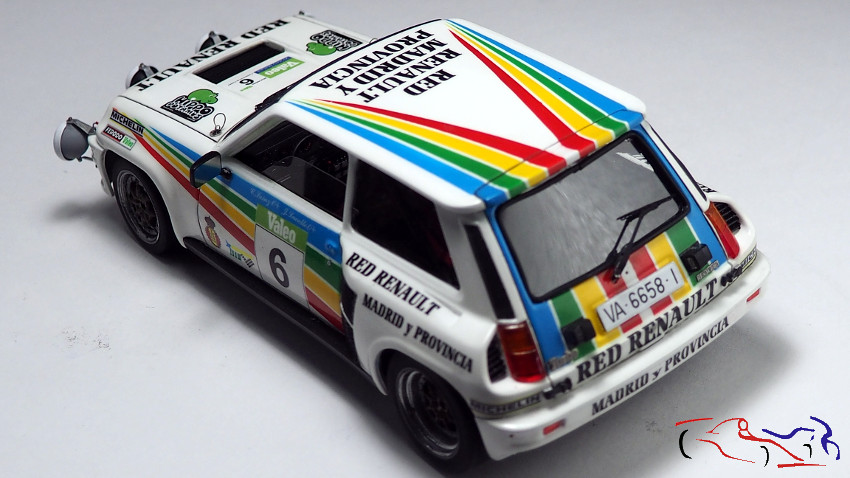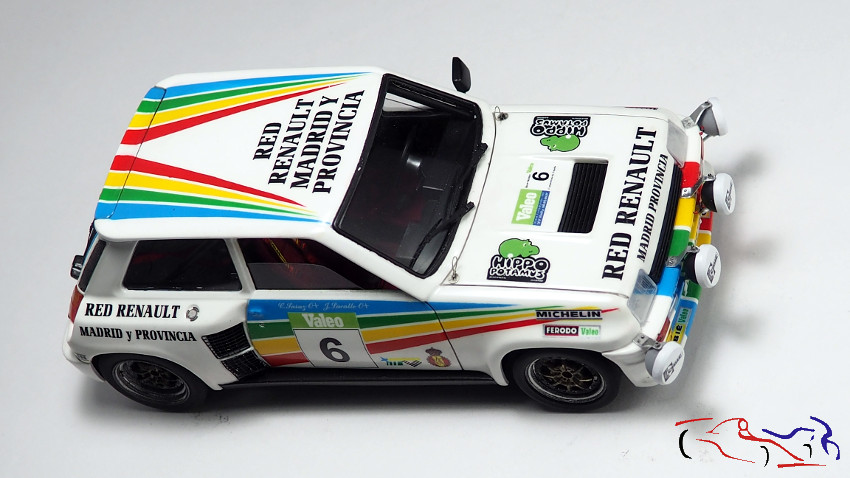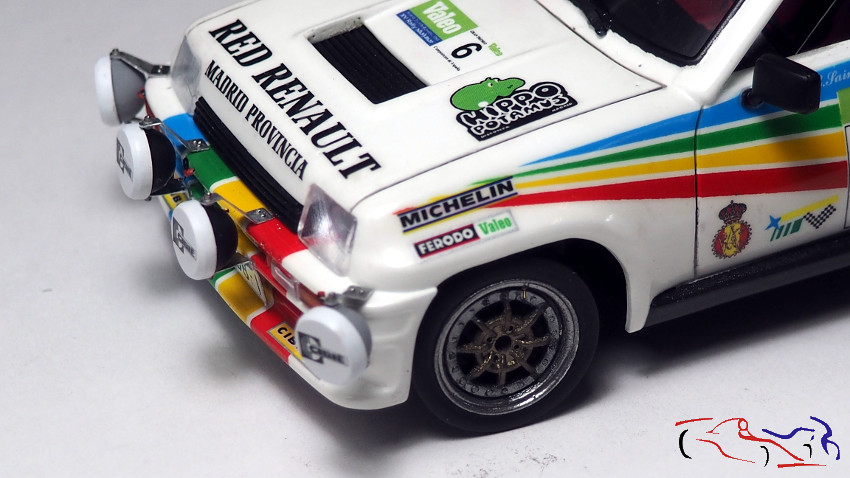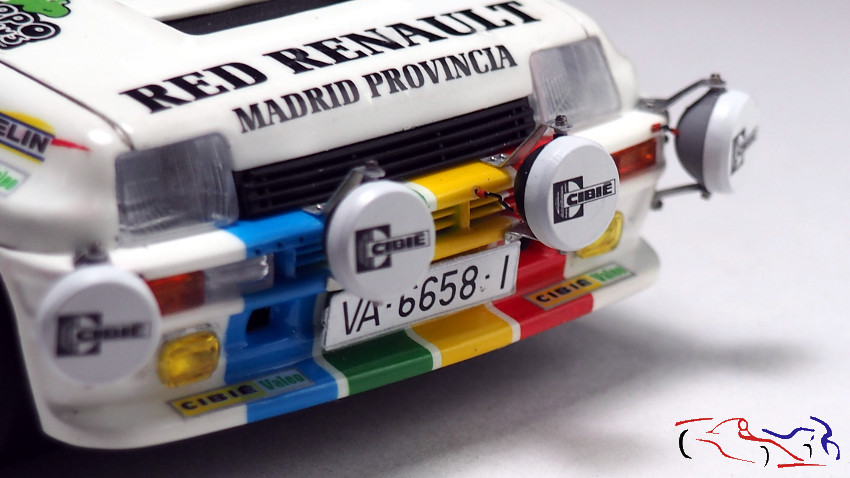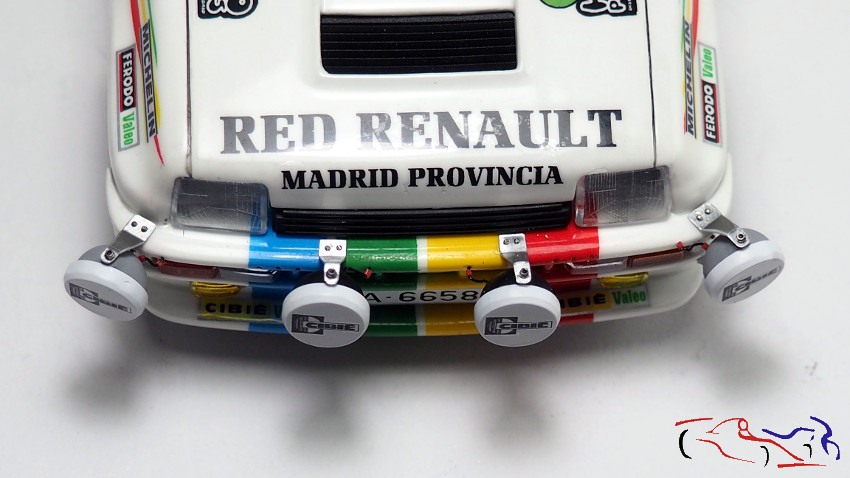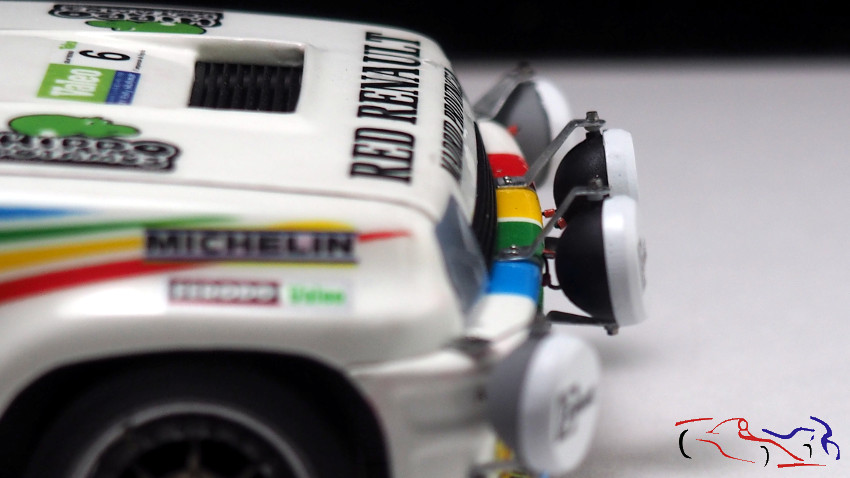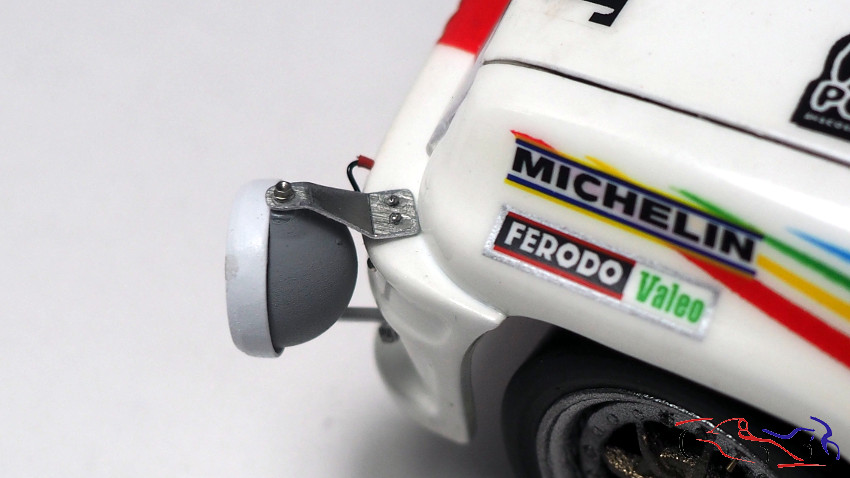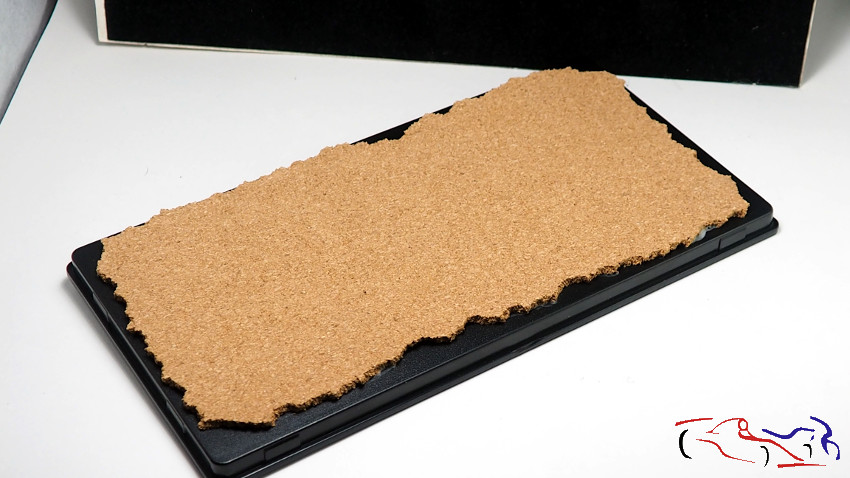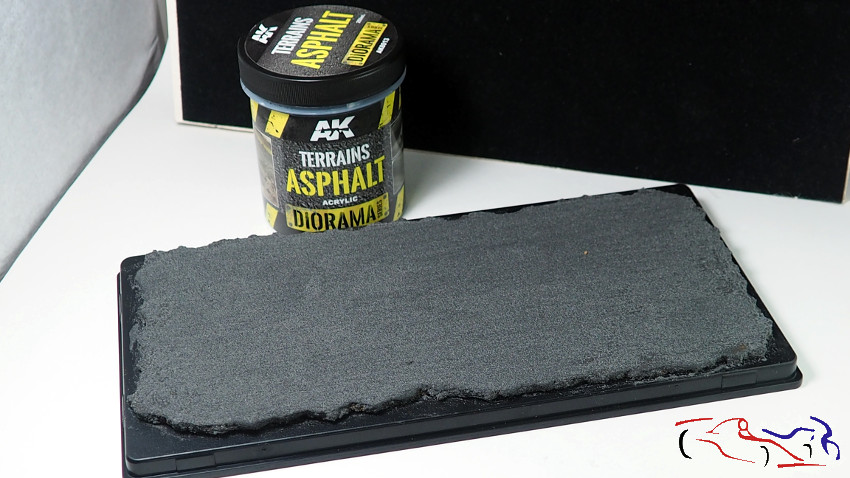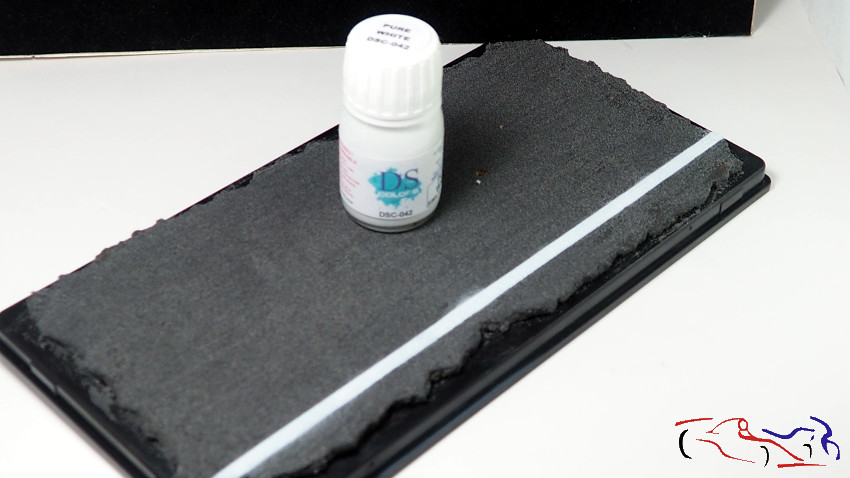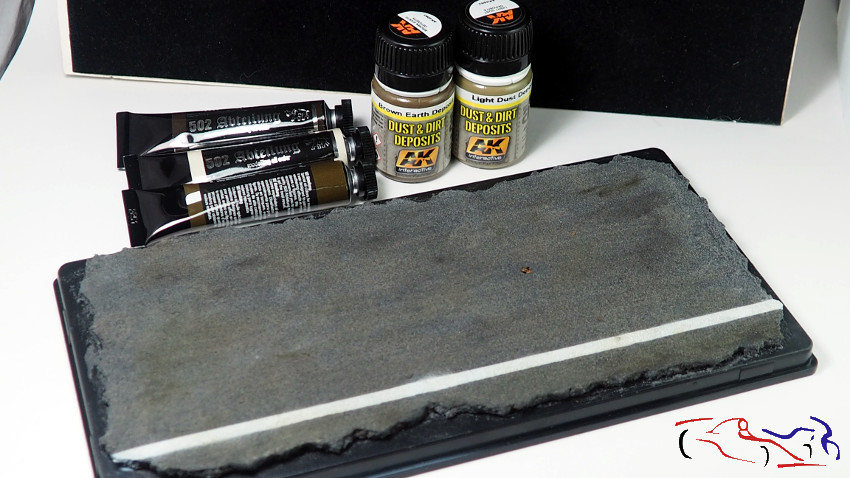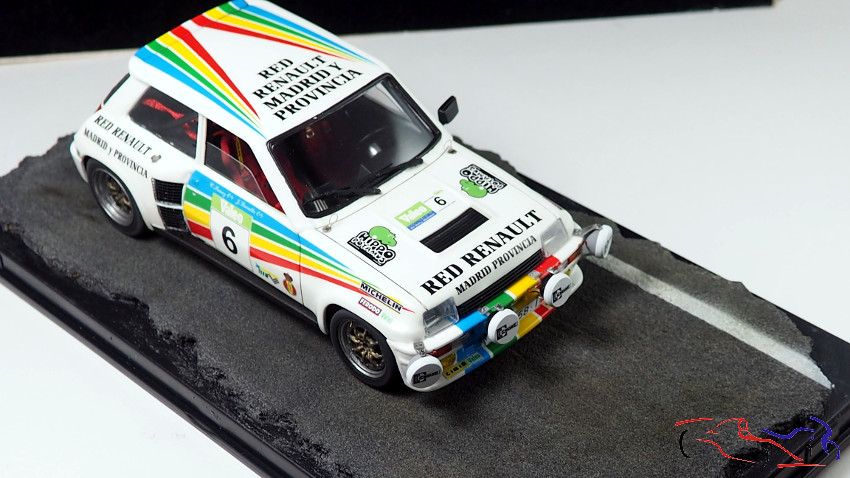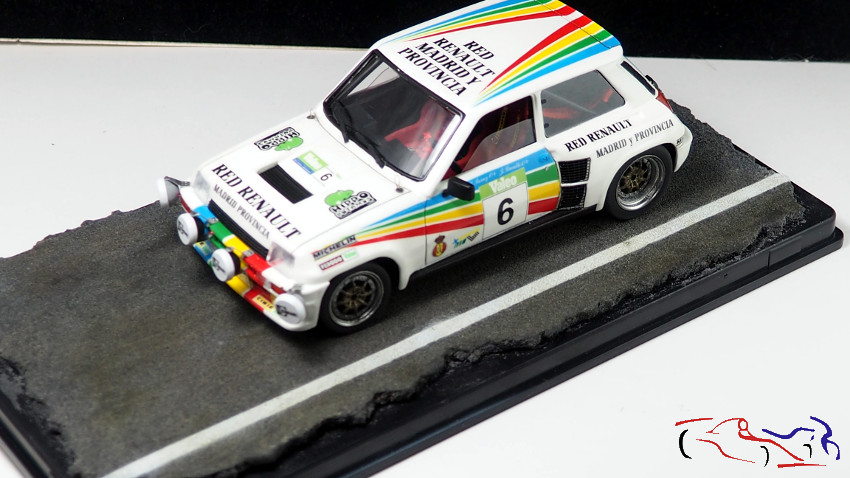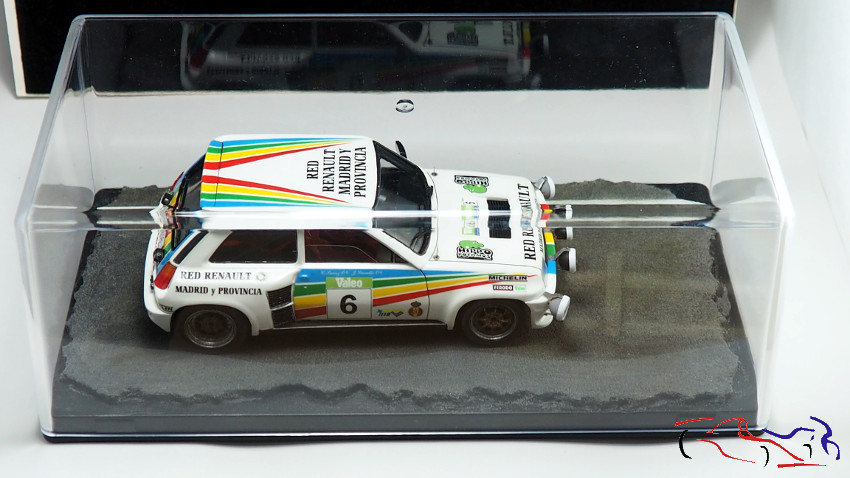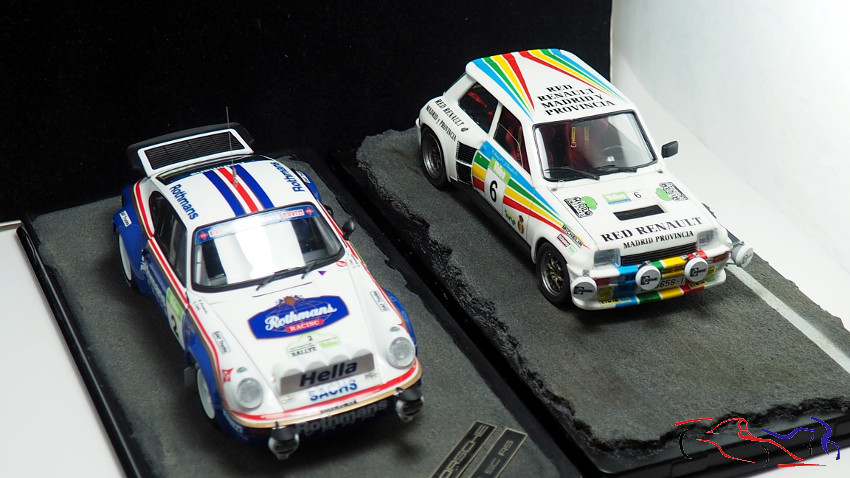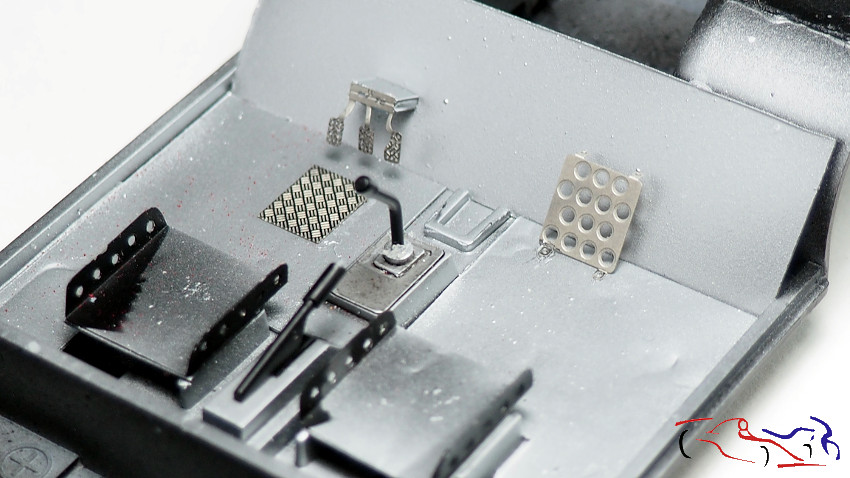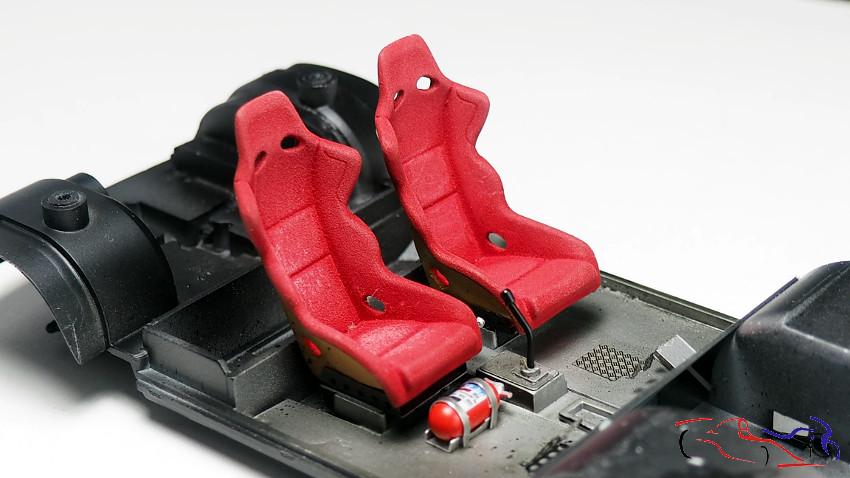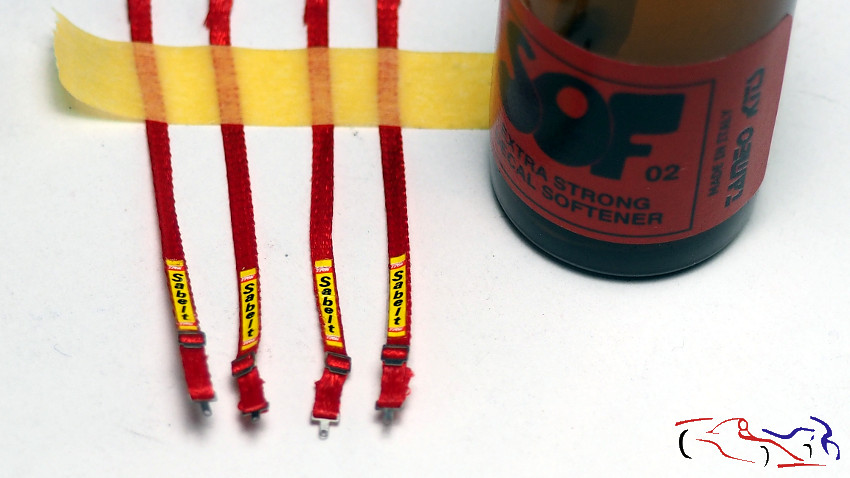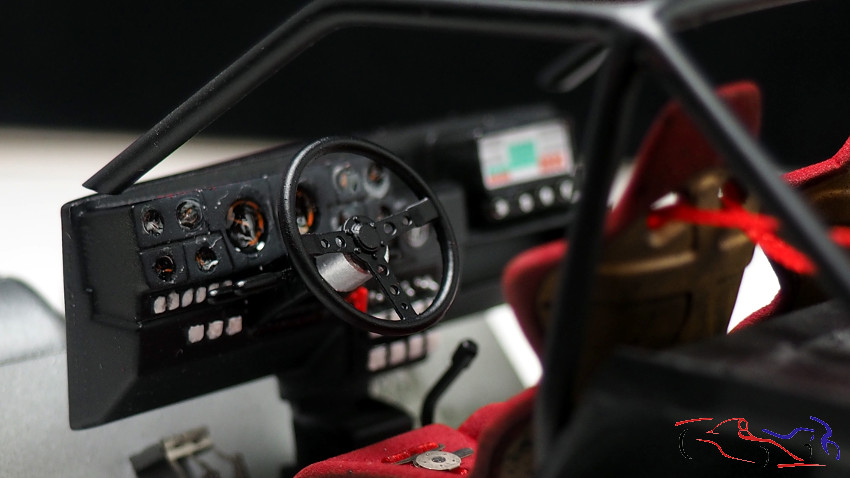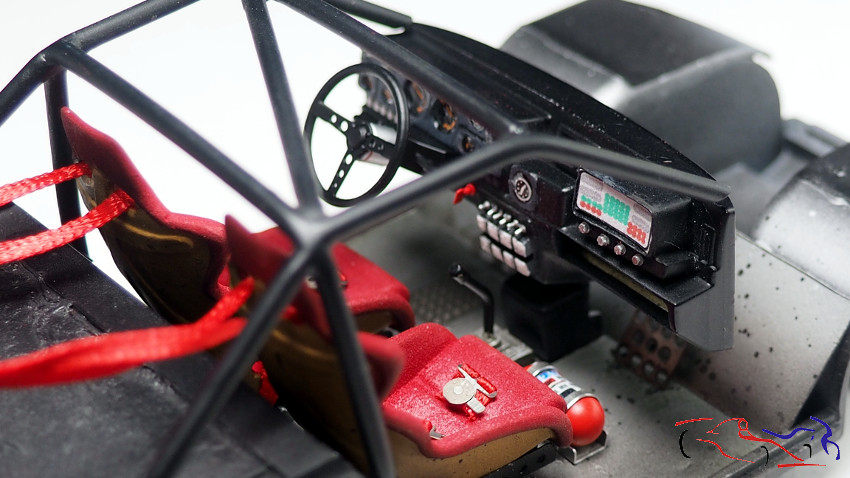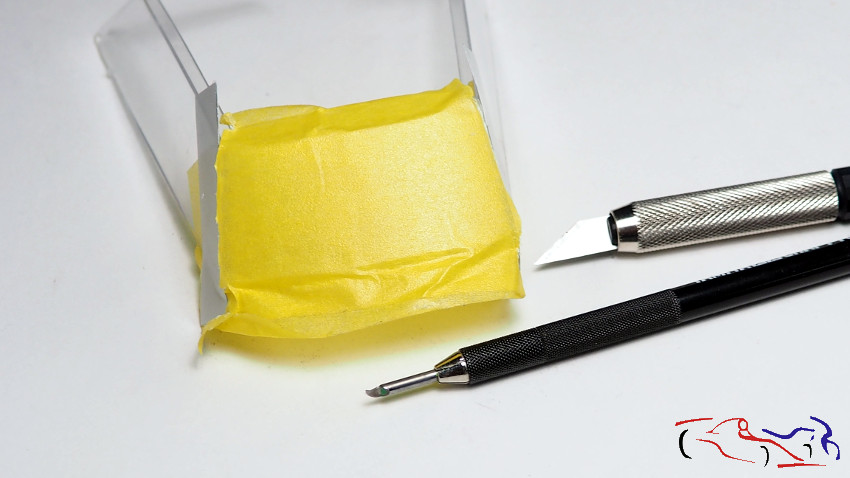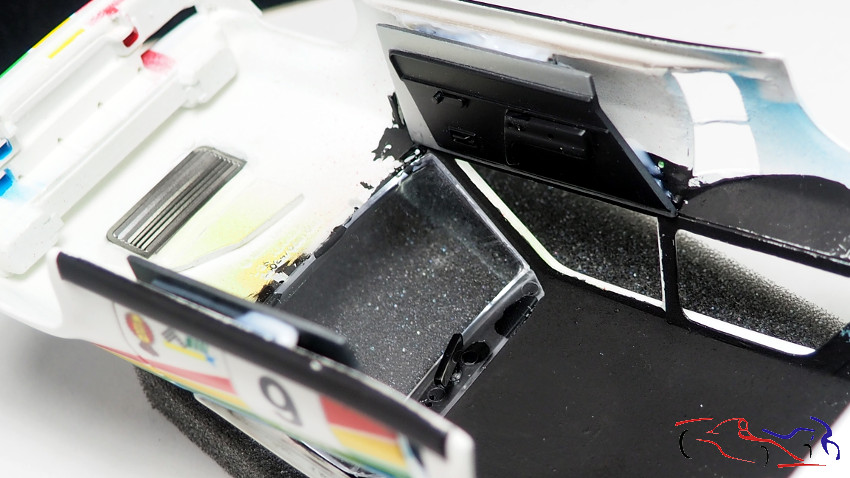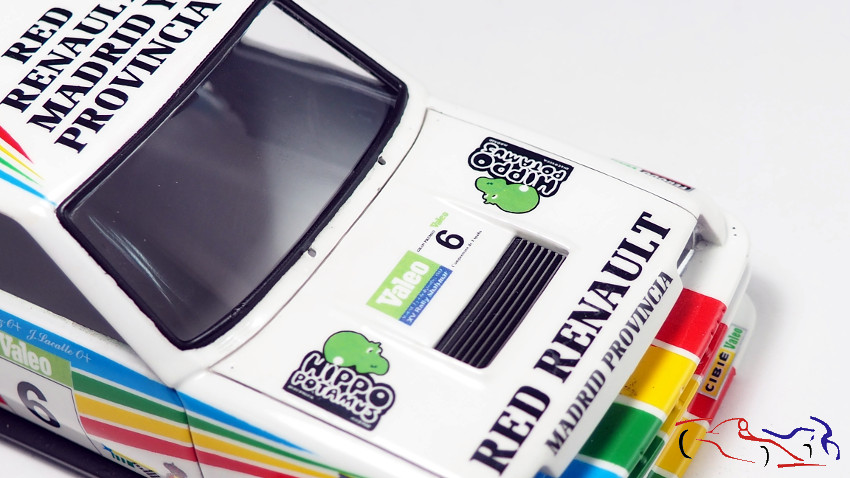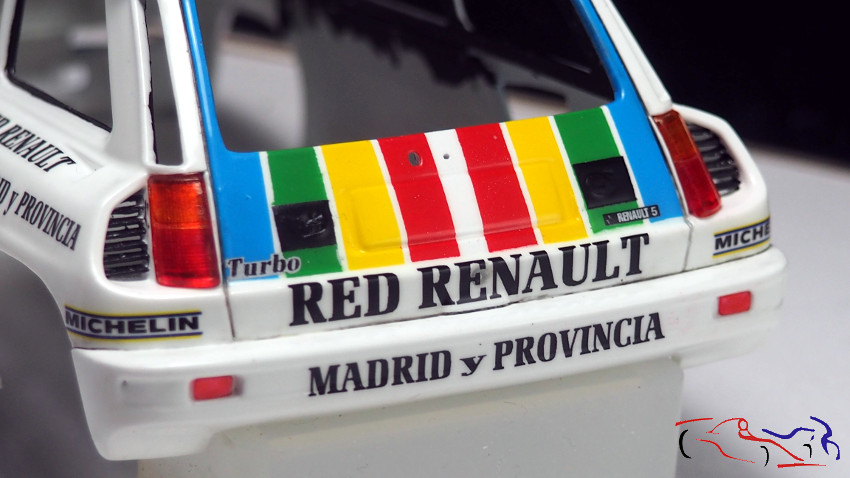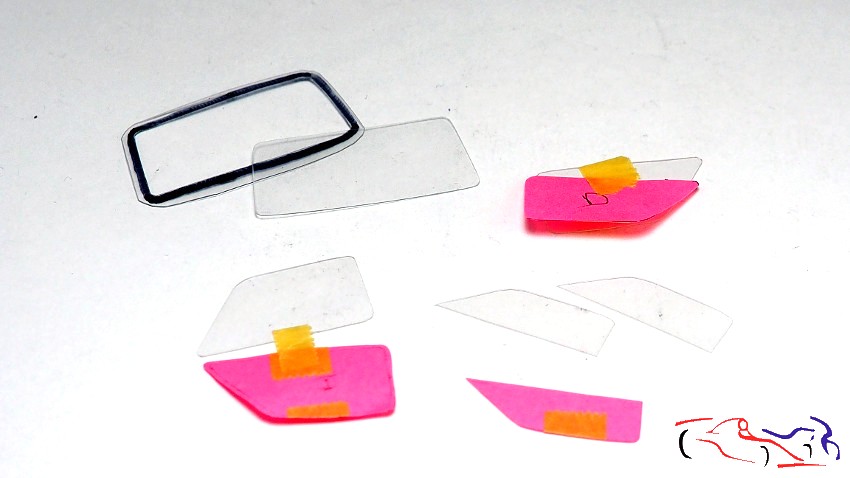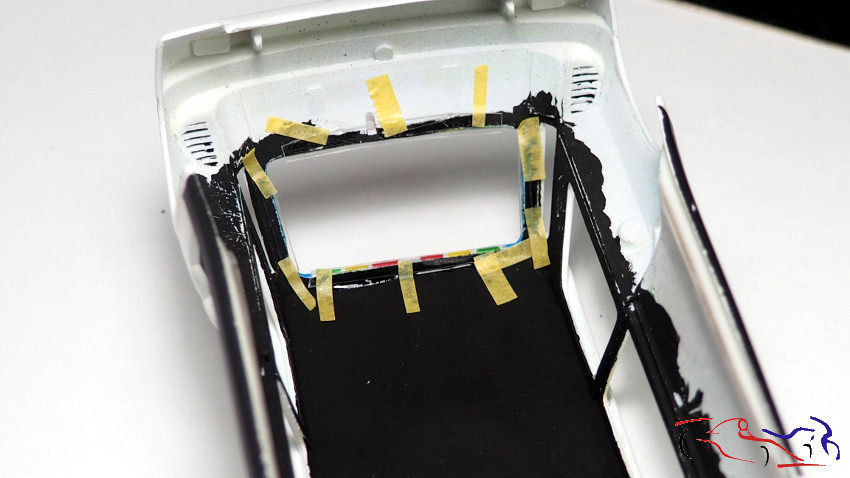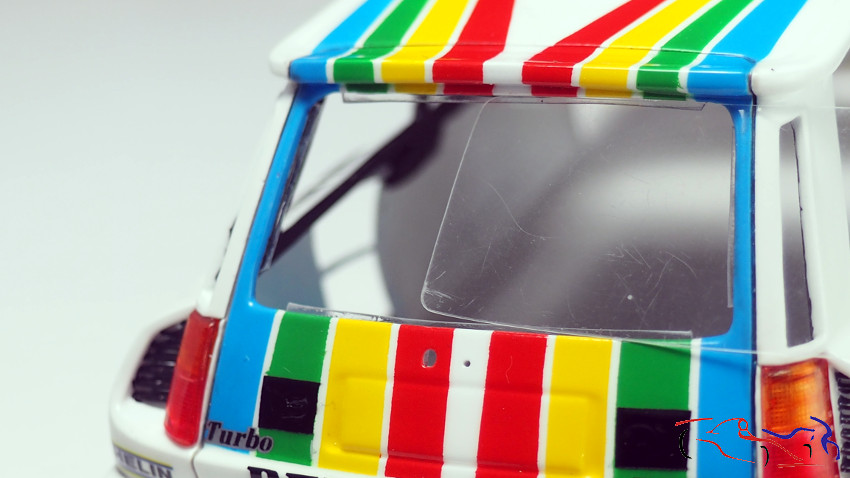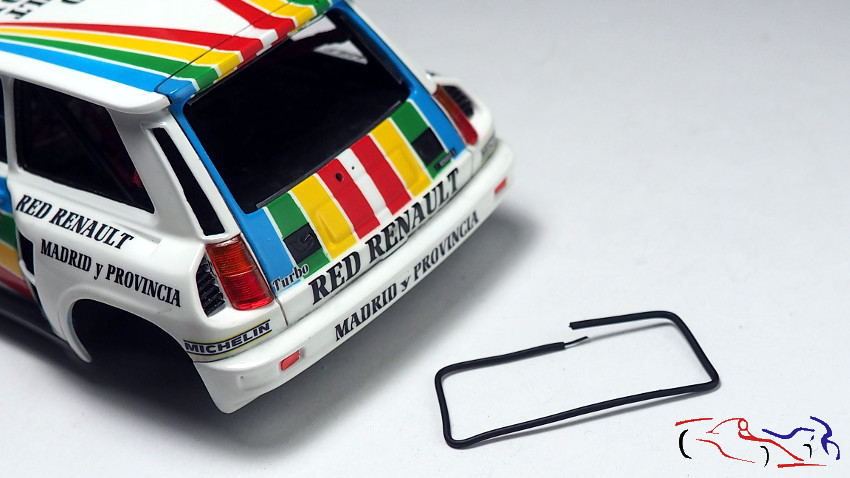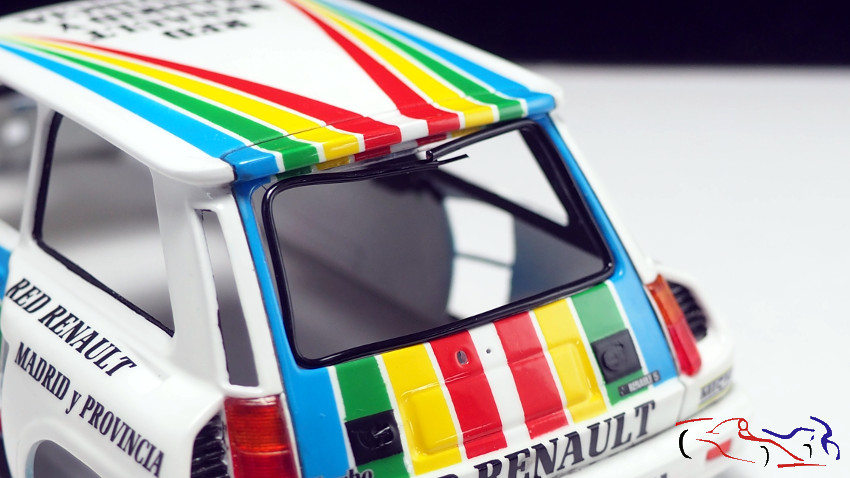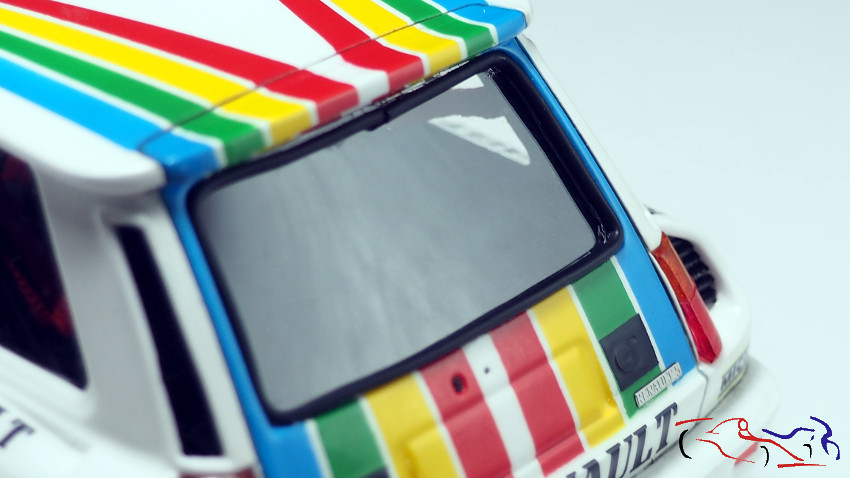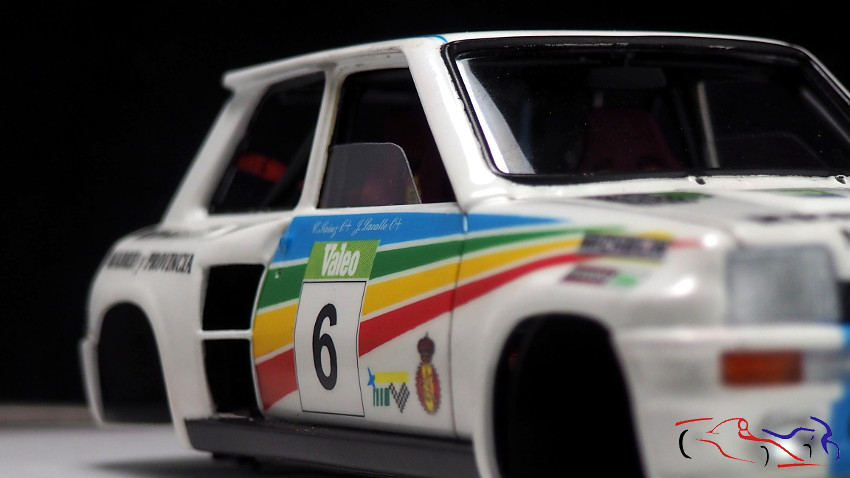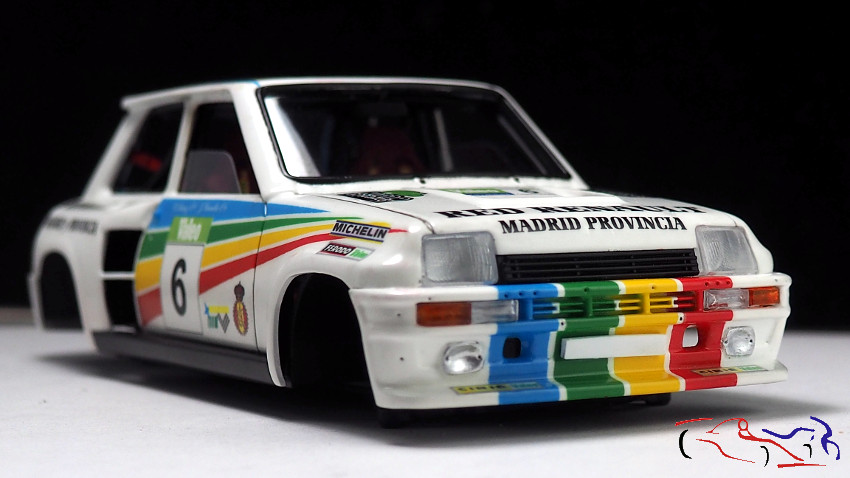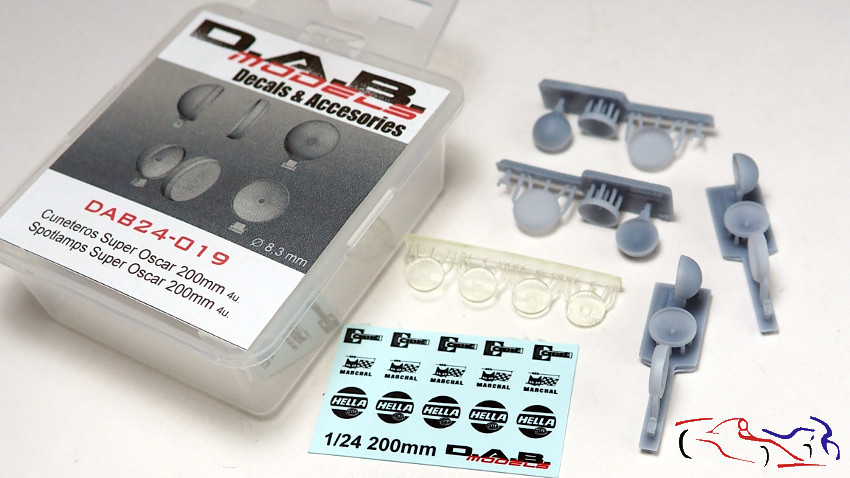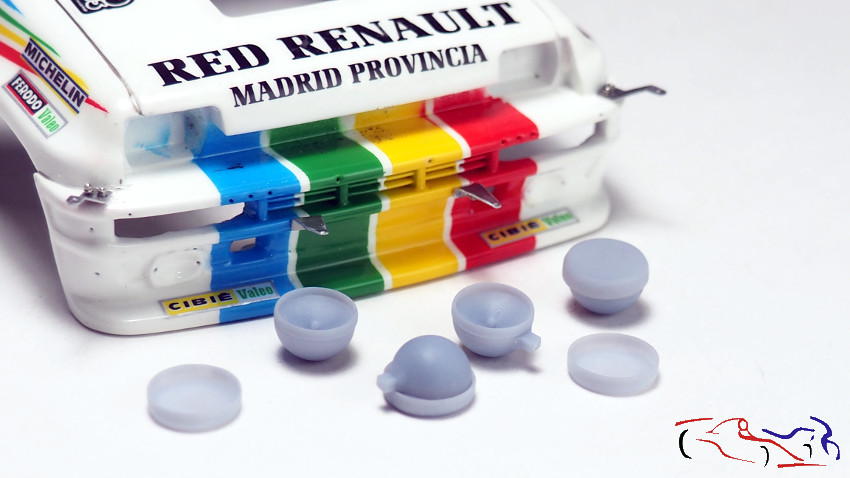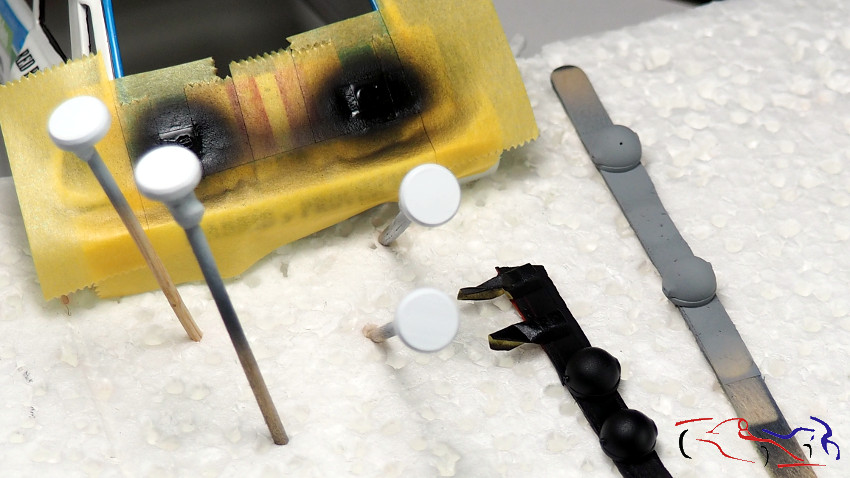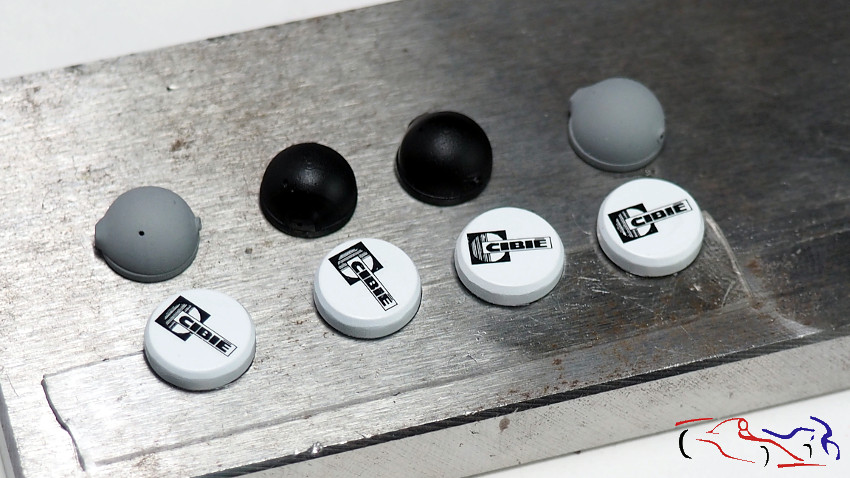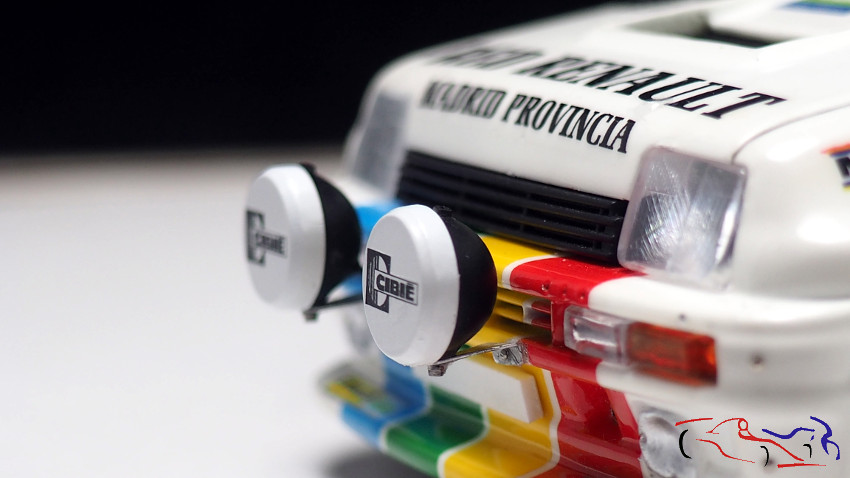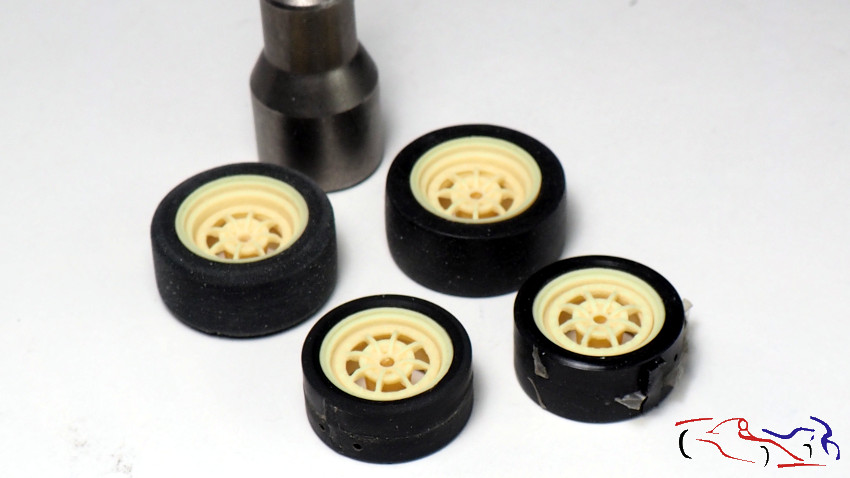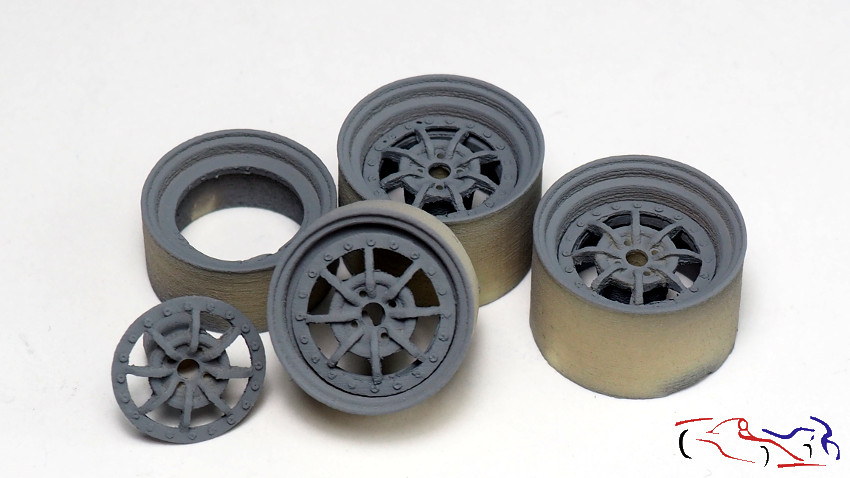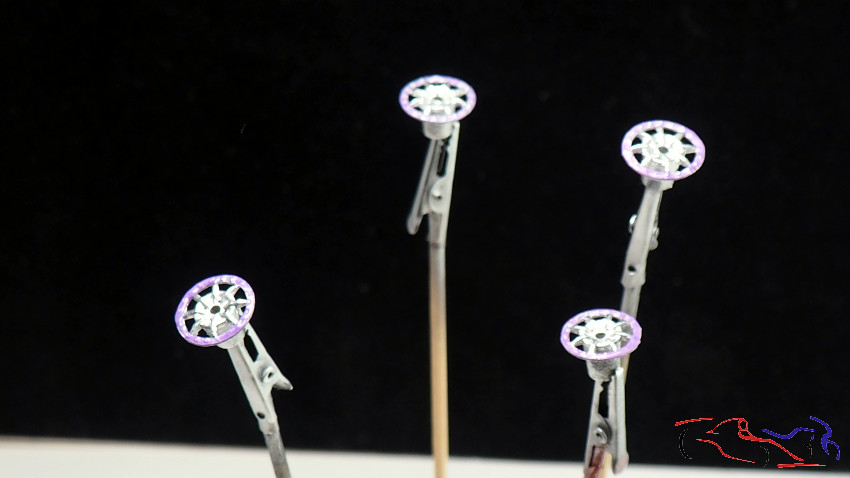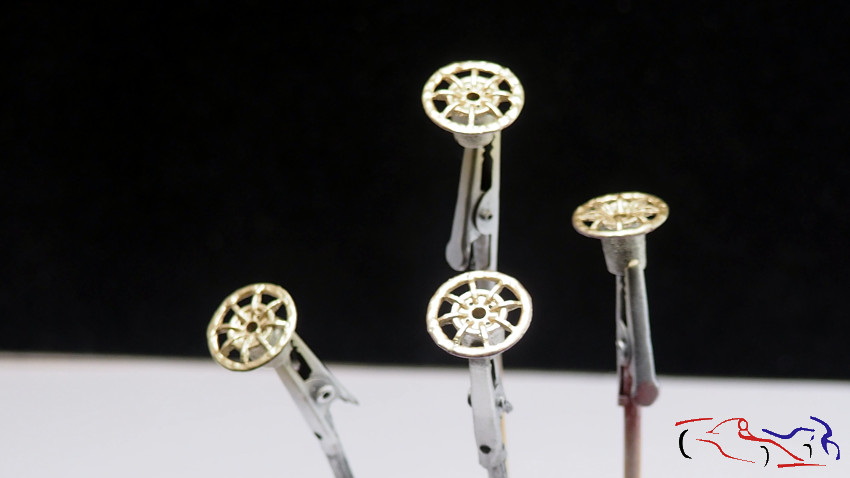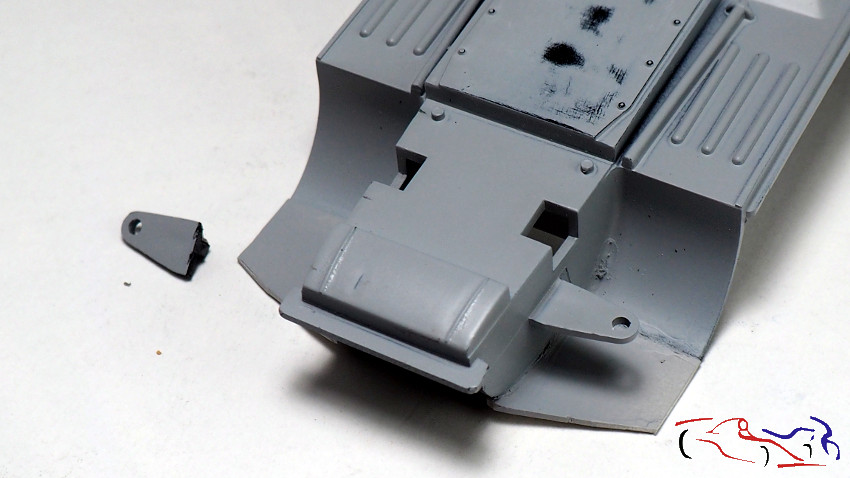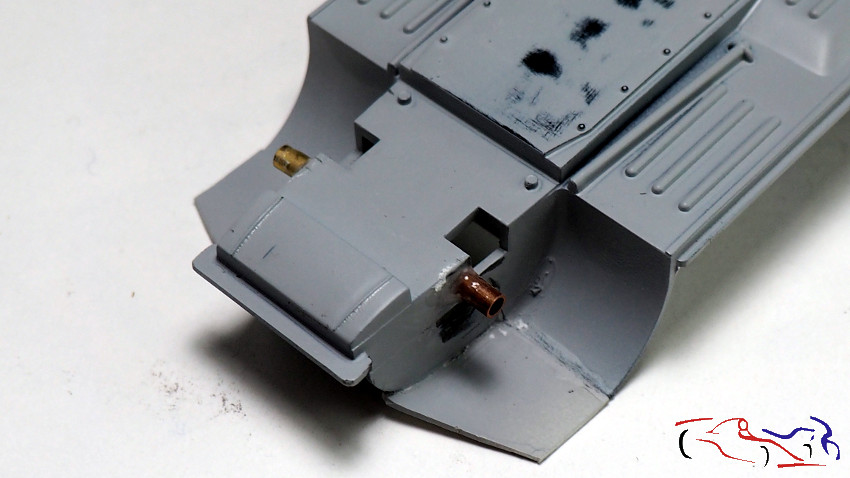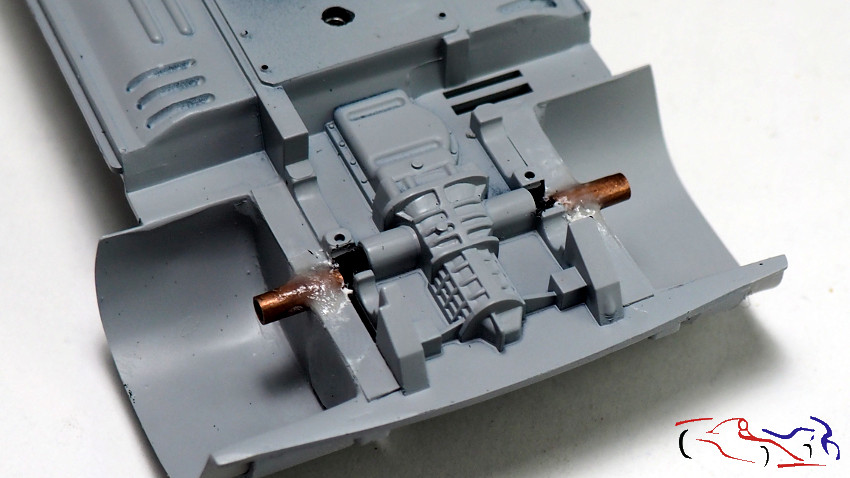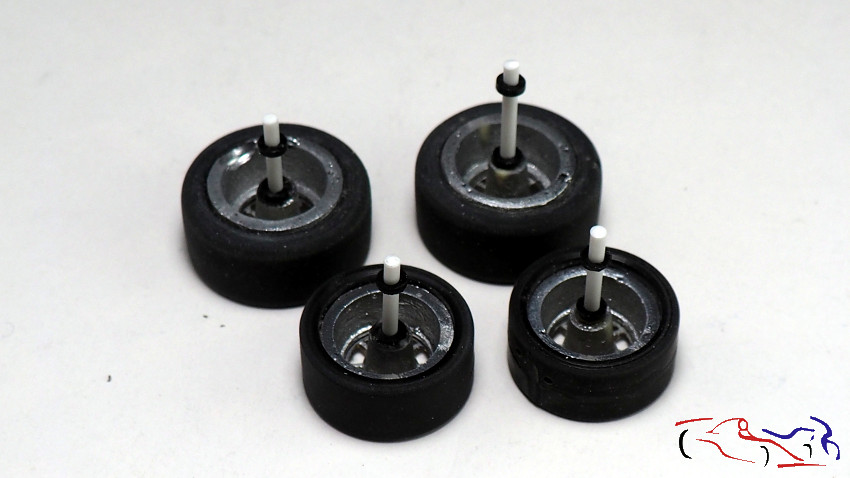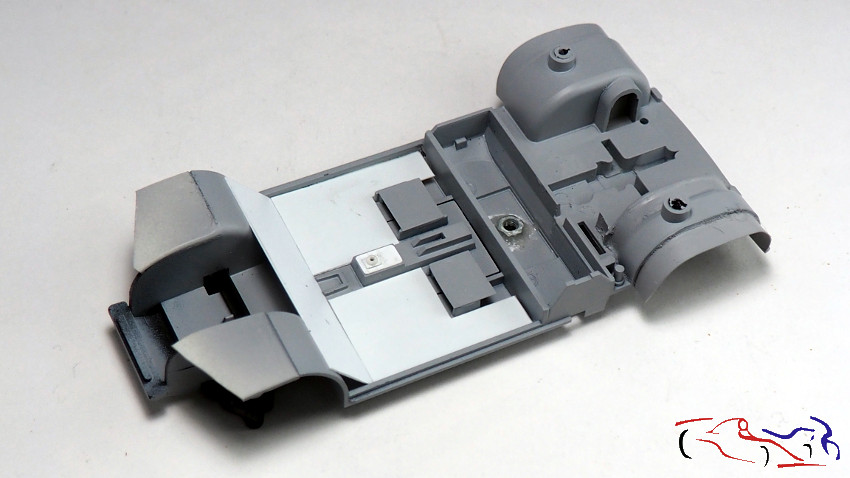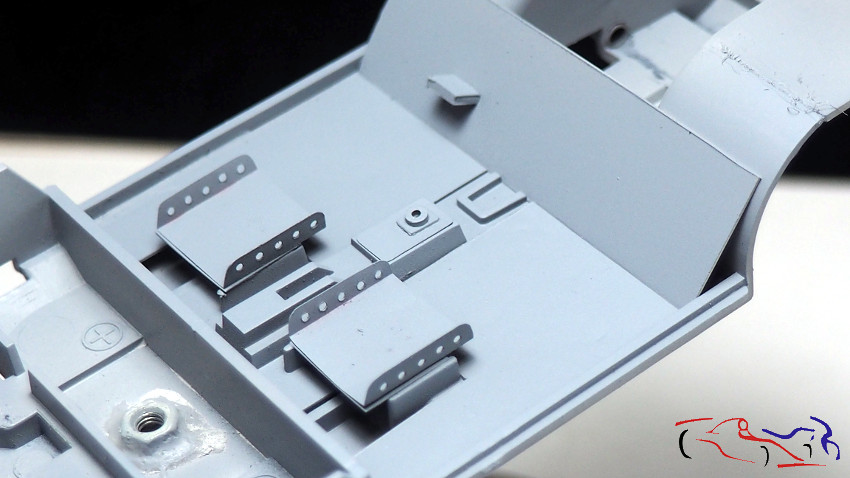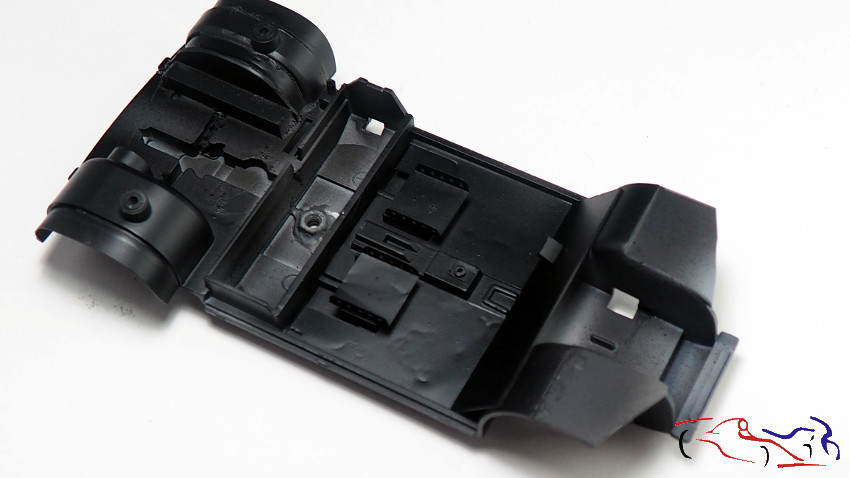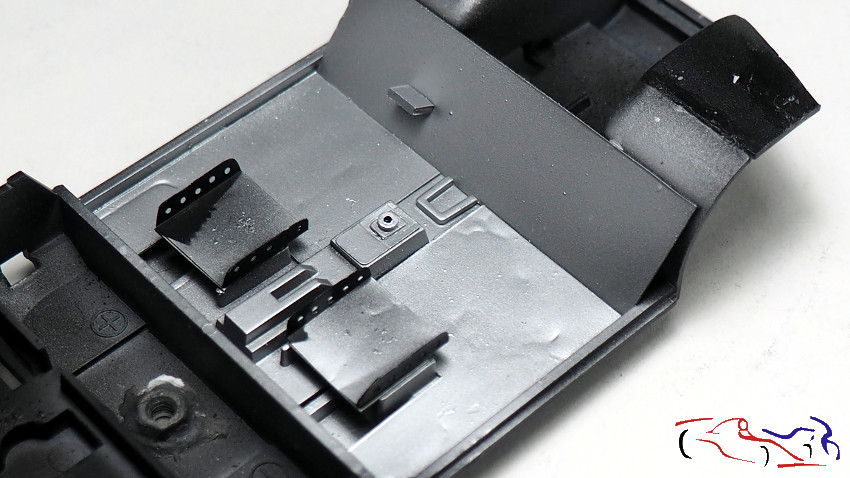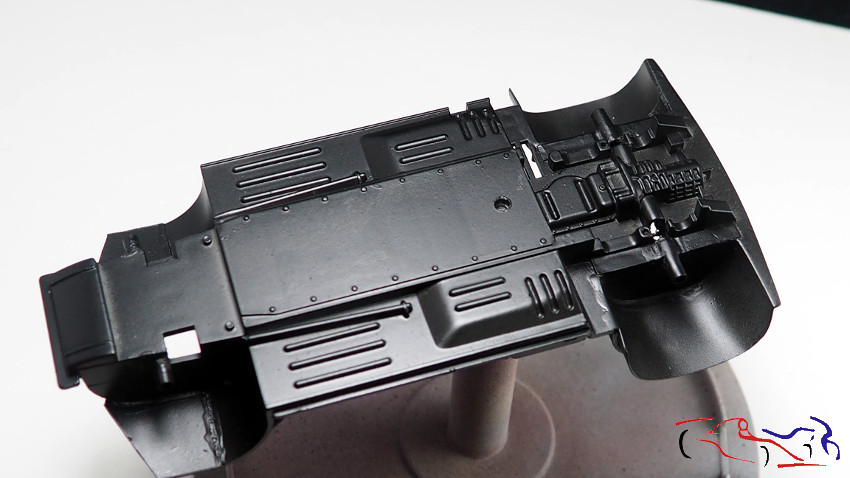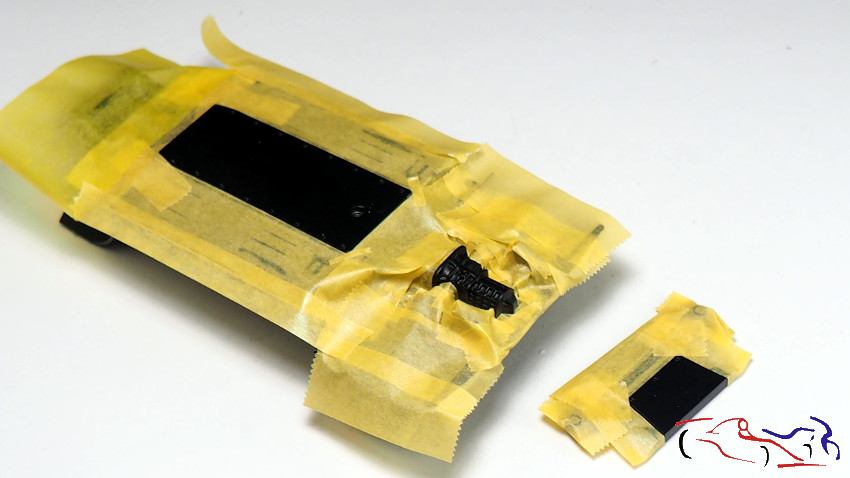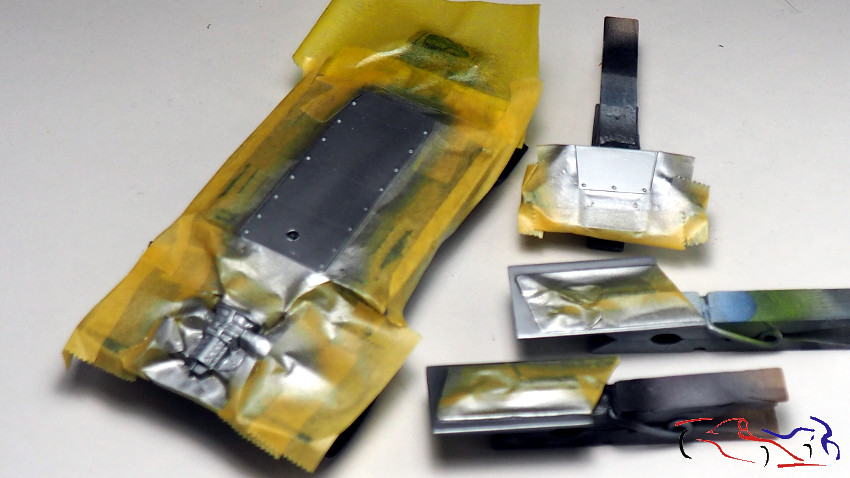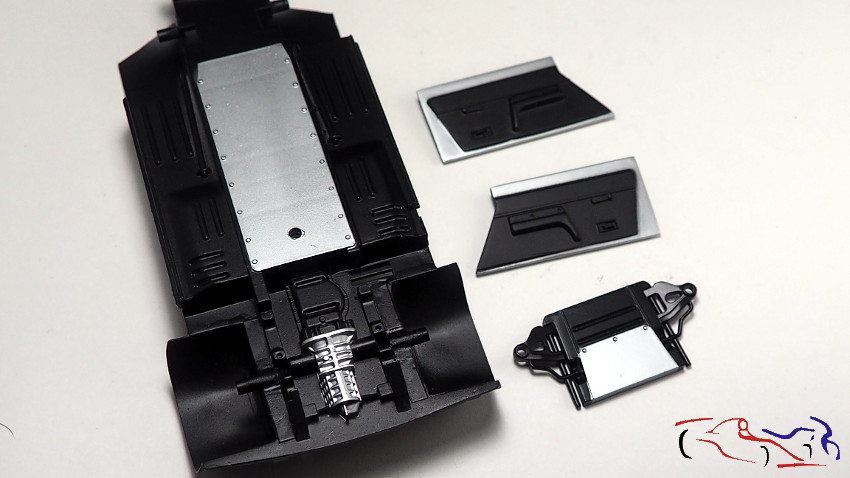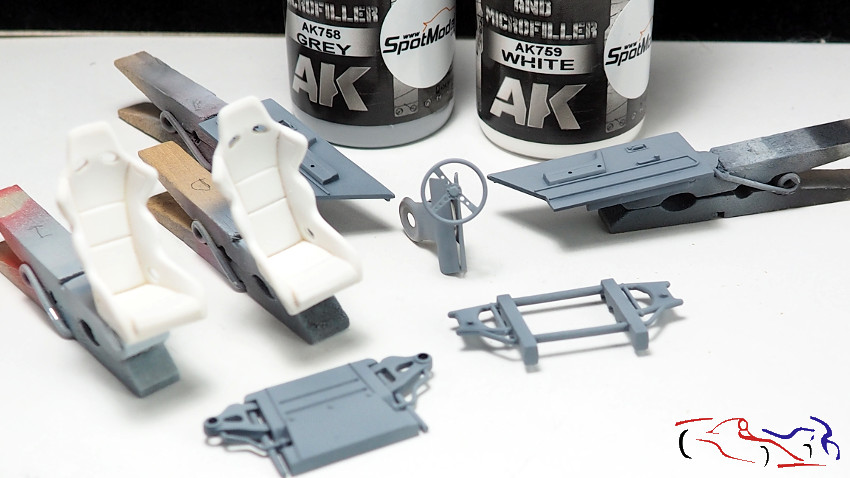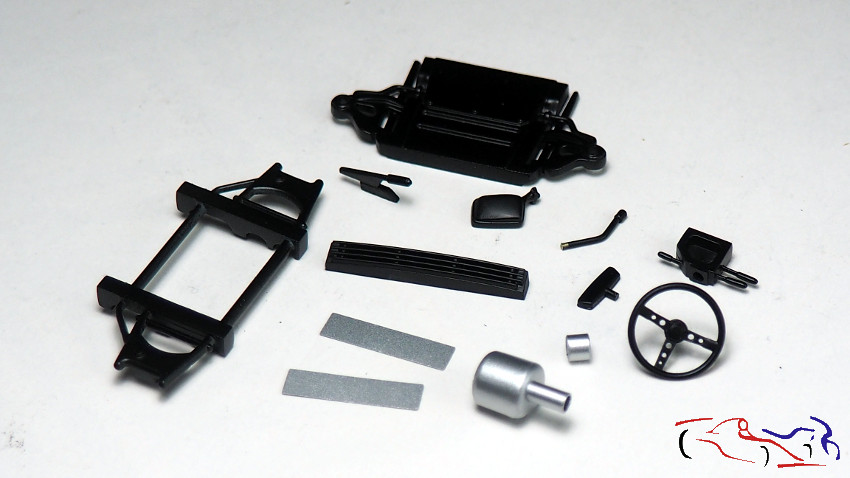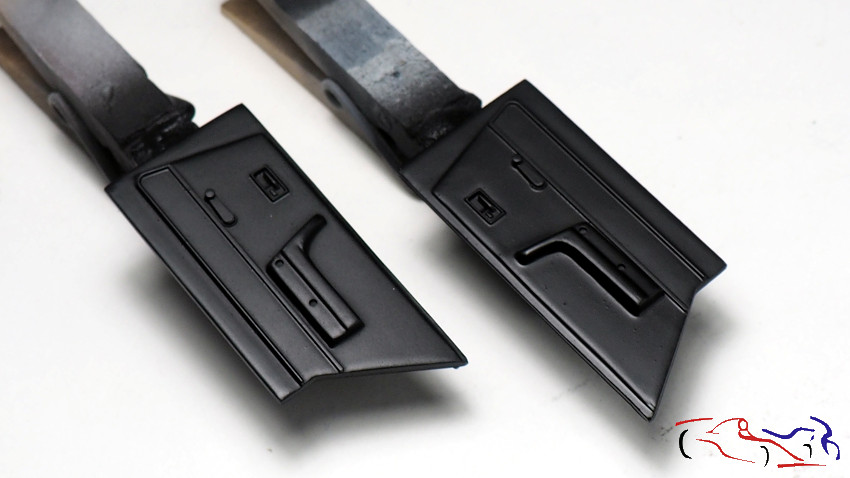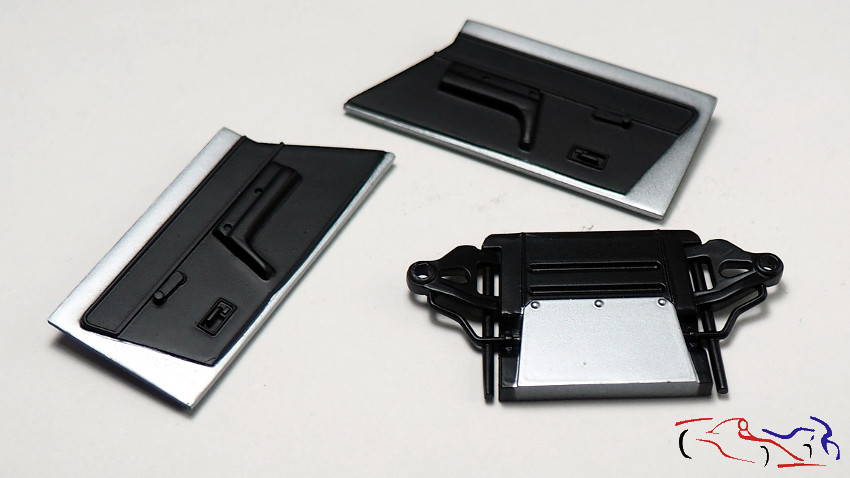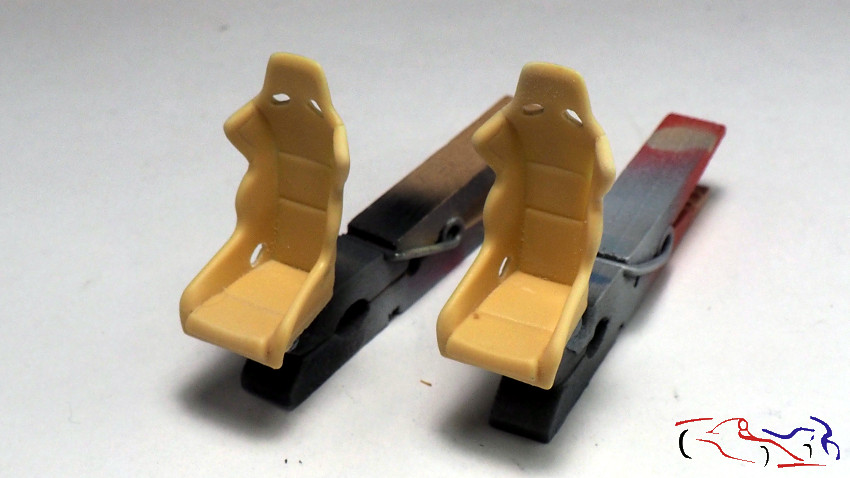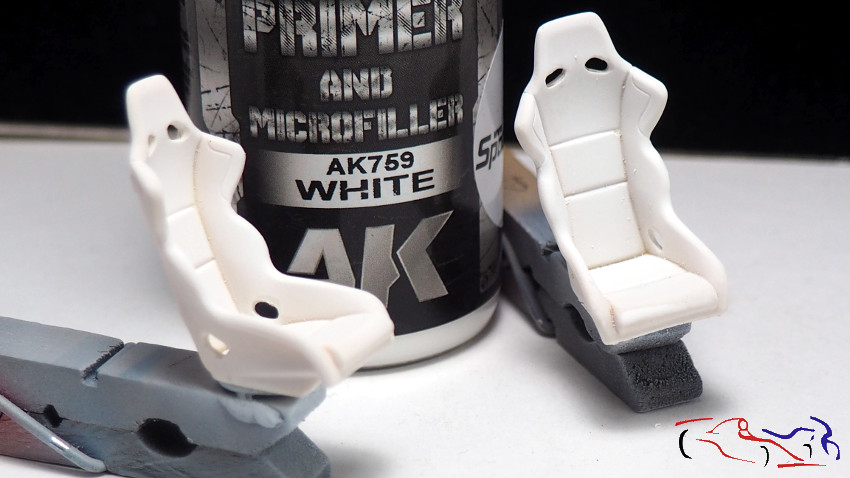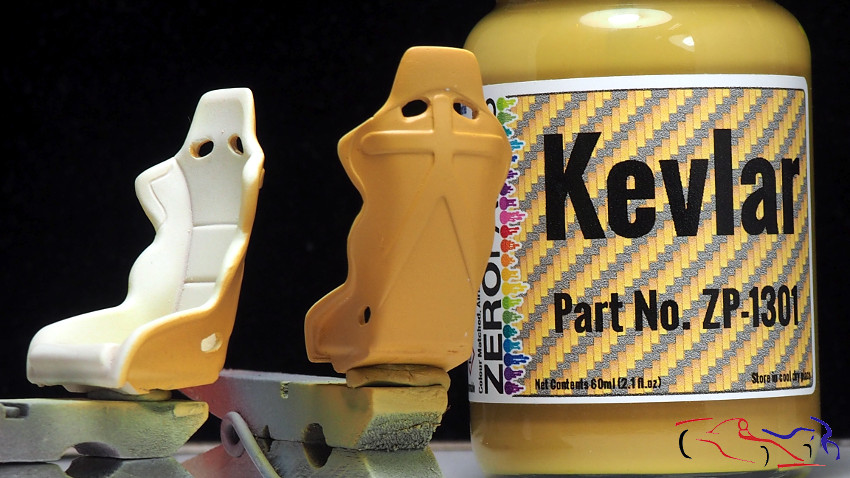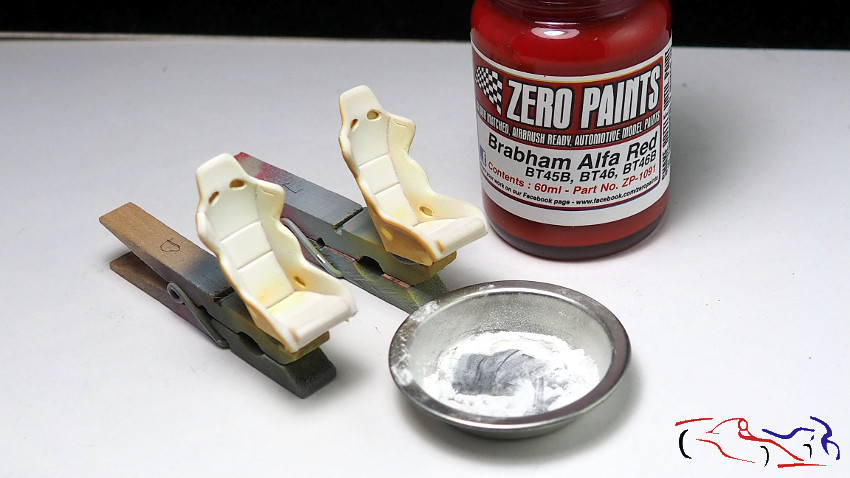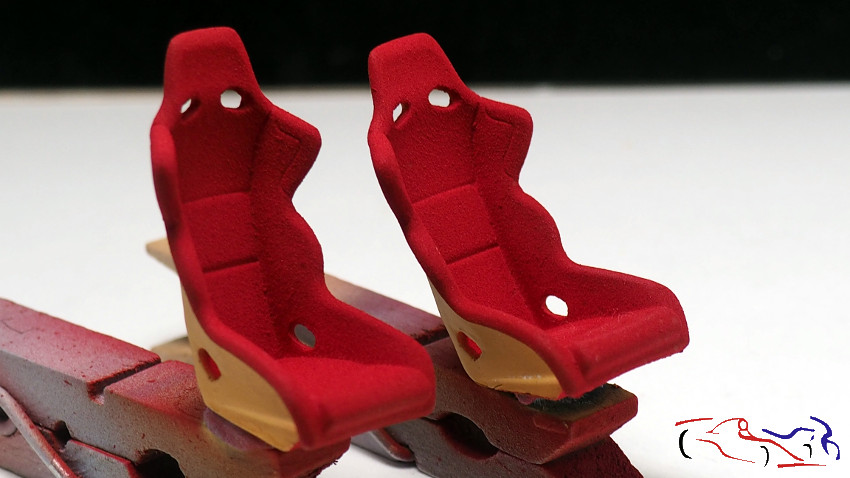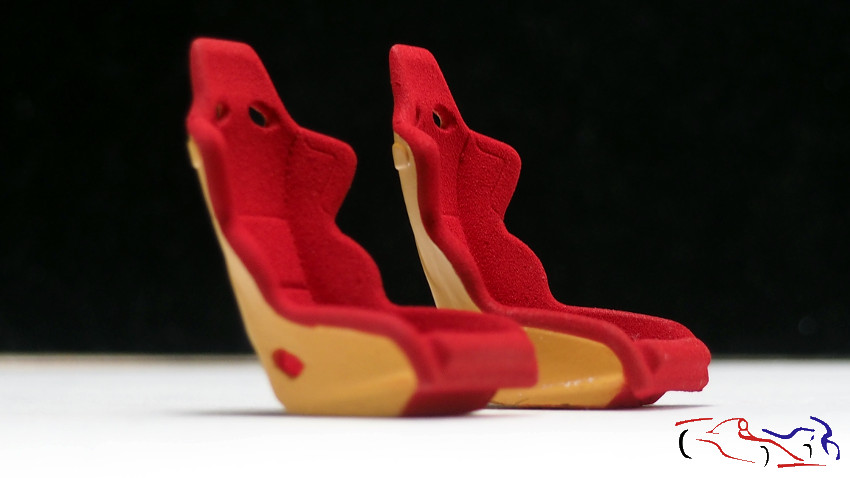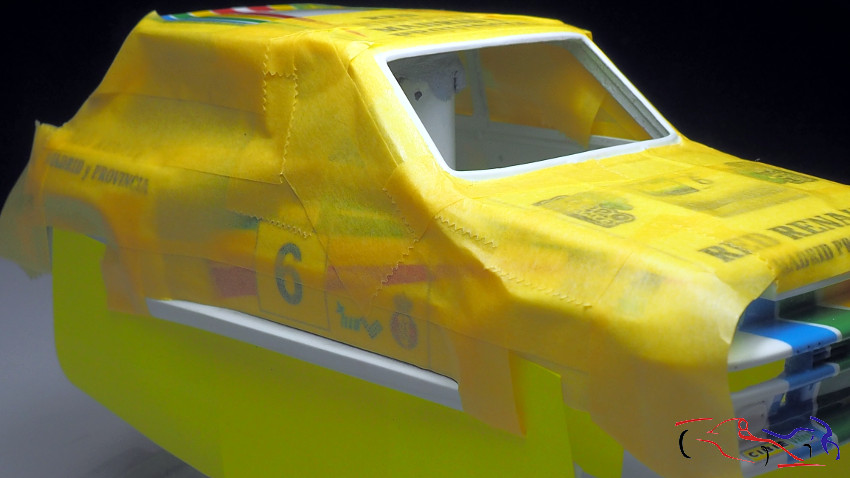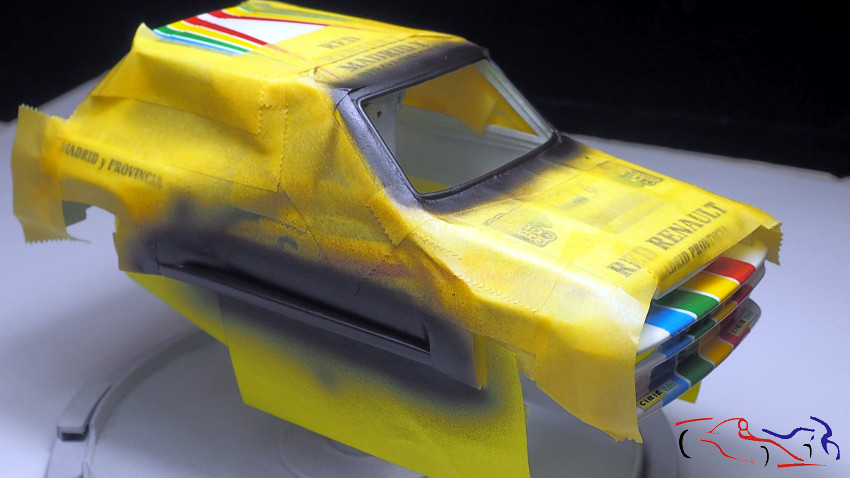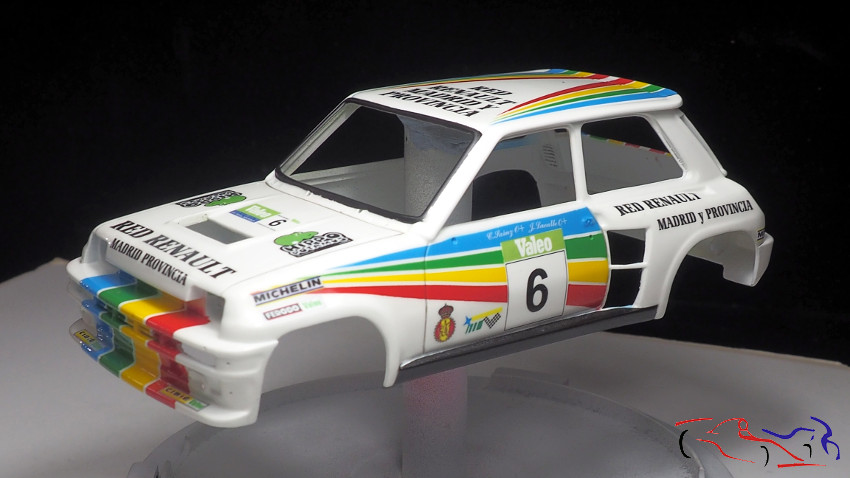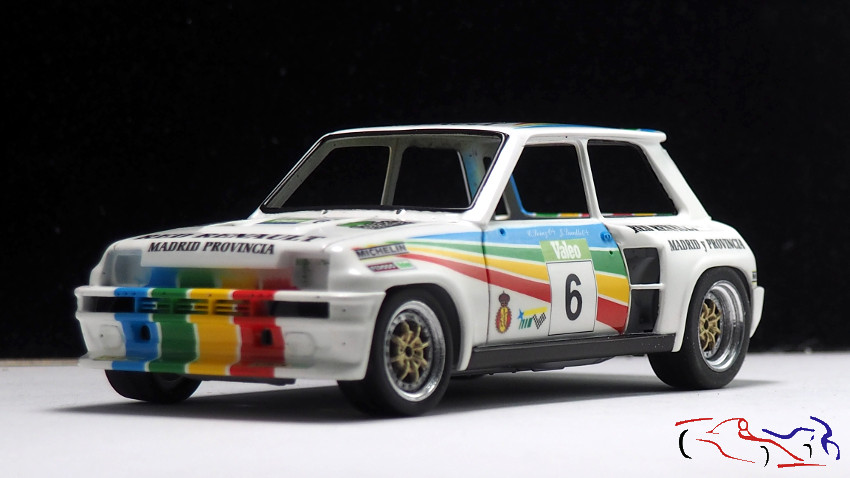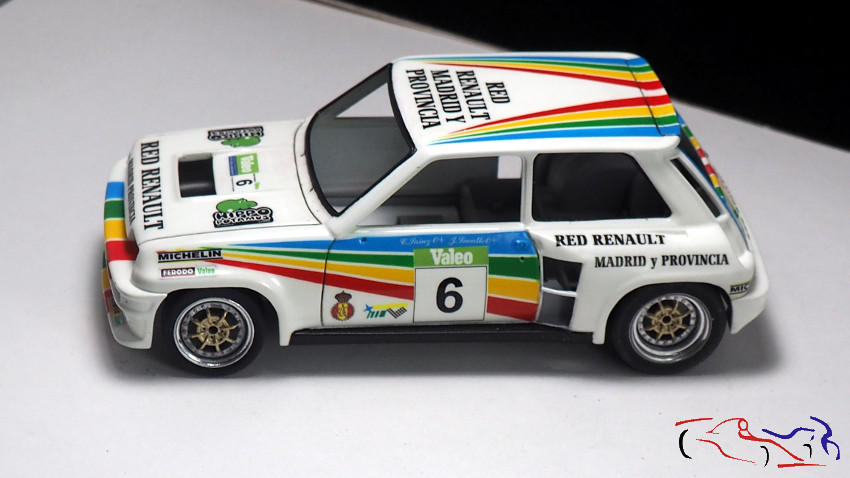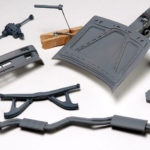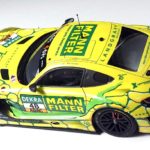Segunda entrada de este proyecto, y seguimos con las puertas, y su mecanismo. Una vez la puertas están recortadas de la carrocería, tenemos que adelgazar el borde delantero de la carrocería donde la puerta bascula. Para ello, pinto el borde con rotulador permanente para saber donde tengo que adelgazar. En la foto, veis que la parte superior, ya está más delgada, trabajo que hice con el minitaladro de Dspiae. Ahora queda el resto y la parte correspondiente a la otra puerta.
Second entry of this project, and we continue with the doors and their mechanism. Once the doors are cut out of the body, we have to thin the front edge of the body where the door swings. To do this, I paint the edge with a permanent marker to know where I have to thin. In the photo, you can see that the upper part is already thinner, work that I did with the Dspiae mini drill. Now the rest remains and the part corresponding to the other door.
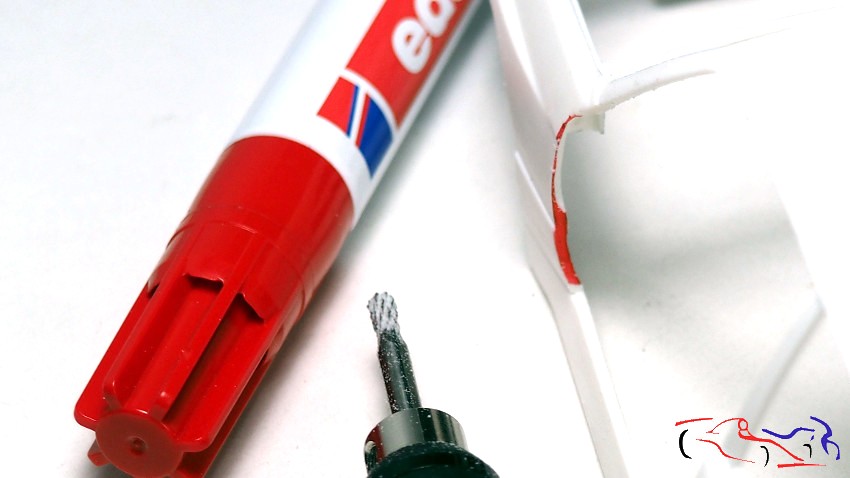
Y ahora vamos con las bisagras. Un problema que existe al analizar el tema de las bisagras, es crearlo todo de tal modo, que se puedan tratar por separado la carroceria y las puertas, y despues colocarlas. Y de ese modo, se utilizan varillas que se insertan en tubos, o imanes, que son los que he decidio usar para este modelo. En mi caso, el interior de la carrocería tiene hueco para un rectágulo de plástico, donde poner un redondo y en sus extremos dos imanes. Y en la puerta, se fijan otros dos imanes colocados a la altura de los anteriores.
And now we come to the hinges. One problem that exists when analyzing the subject of hinges is to create everything in such a way that the body and the doors can be treated separately, and then placed. And so, rods are used that are inserted into tubes, or magnets, which are the ones I have decided to use for this model. In my case, the inside of the body has space for a plastic rectangle, where to put a round one and at its ends two magnets. And on the door, two other magnets are fixed placed at the same height as the previous ones.

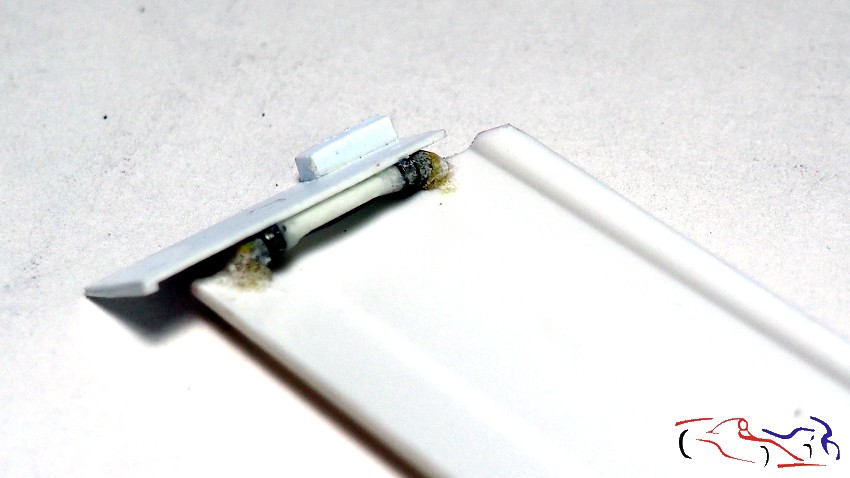
Para colocarlos en su posición, primero pego el plastico con el redondo, que ya tiene sus dos imanes en los extremos, y los otros dos imanes que irán pegados a la puerta. Colocamos la puerta y la fijamos con cinta de enmascarar. Y entonces, por dentro de la carrocería, pegamos los dos imanes de la puerta con cuidado de no pegar los otros imanes: solo los de la puerta. Y en este caso, he utilizado masilla epoxi. Y con eso, ya podemos abrir y cerrar la puerta.
To put them in position, I first glue the plastic with the round one, which already has its two magnets at the ends, and the other two magnets that will be glued to the door. We place the door and secure it with masking tape. And then, inside the body, we glue the two door magnets, being careful not to glue the other magnets: only those of the door. And in this case, I have used epoxy putty. And with that, we can now open and close the door.
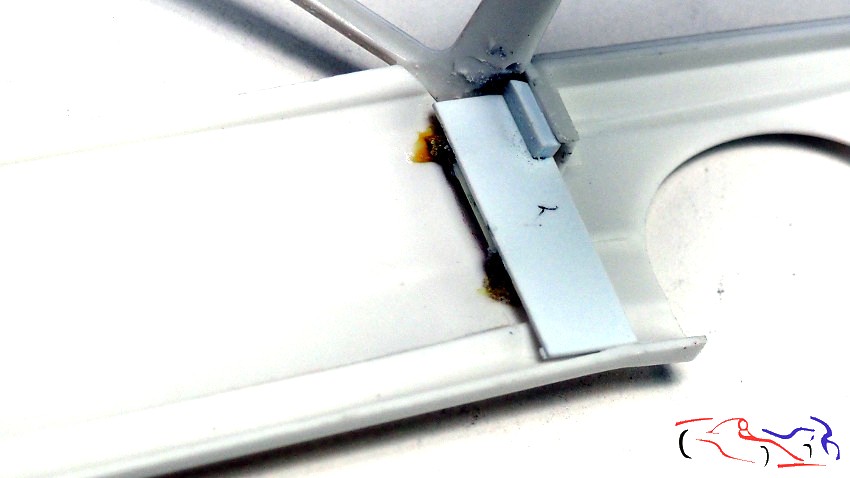

Pero hay que asegurar esas uniones y la pieza extra, para que se pueda extraer la puerta sin problema. Para ello utilizo epoxi para la pieza pegada a la carrocería, y para los imanes, ciano con bicarbonato (pongo ciano y después bicarbonato, asi varia veces), limando y ajustando despues con lima y lija en ambos casos:
But you have to secure these joints and the extra piece, so that the door can be removed without any problem. To do this I use epoxy for the piece glued to the body, and for the magnets, cyano with bicarbonate (I put cyano and then bicarbonate, so it varies from time to time), filing and adjusting afterwards with a file and sandpaper in both cases:
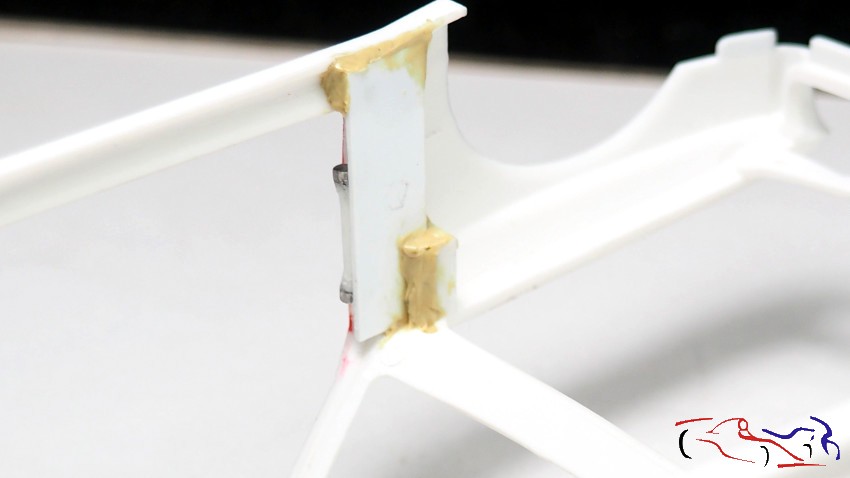
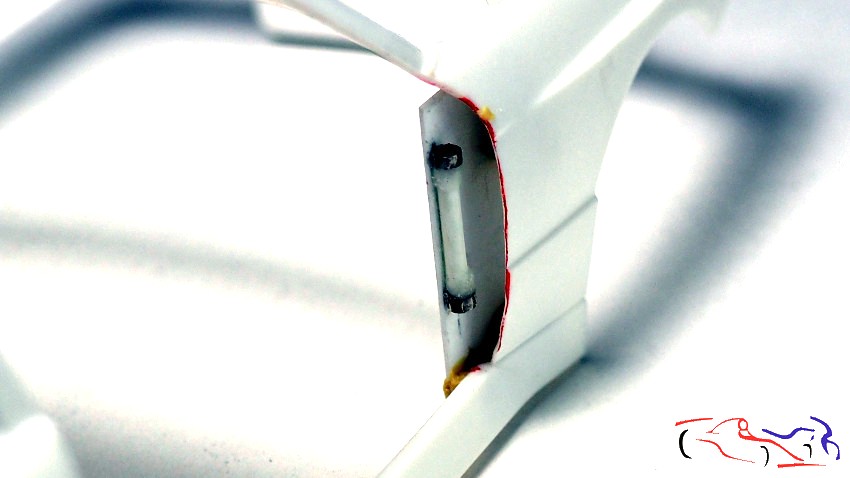
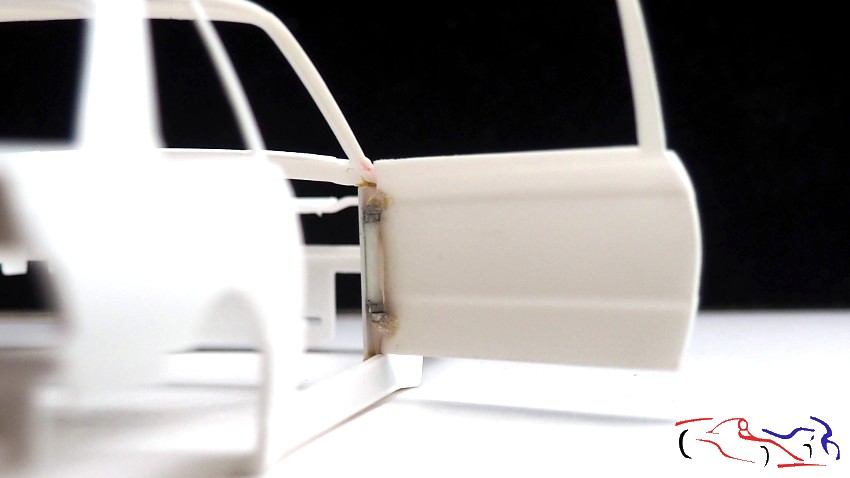

De esta forma podremos abrir y cerrar las puertas sin problema. Más adelante, cuando haga el interior de las puertas, pondré otro imán para que cirren en su posición y no se abran solas.
This way we can open and close the doors without any problem. Later, when I do the inside of the doors, I will put another magnet so that they close in their position and do not open by themselves.
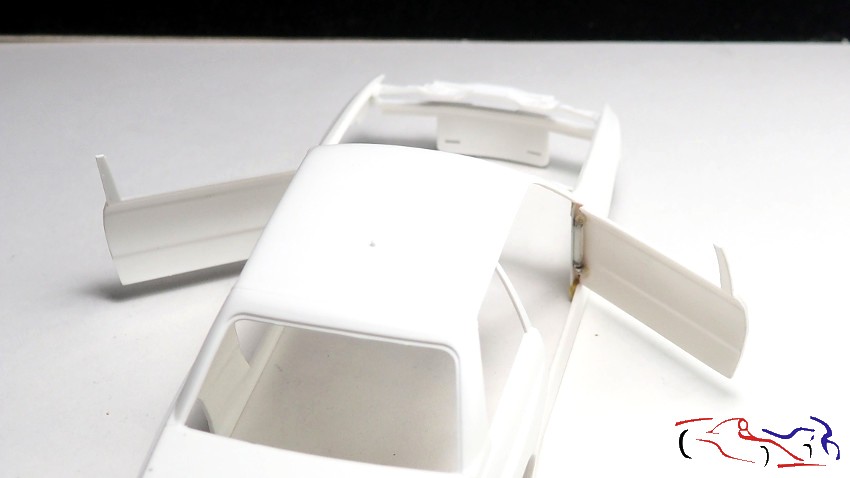
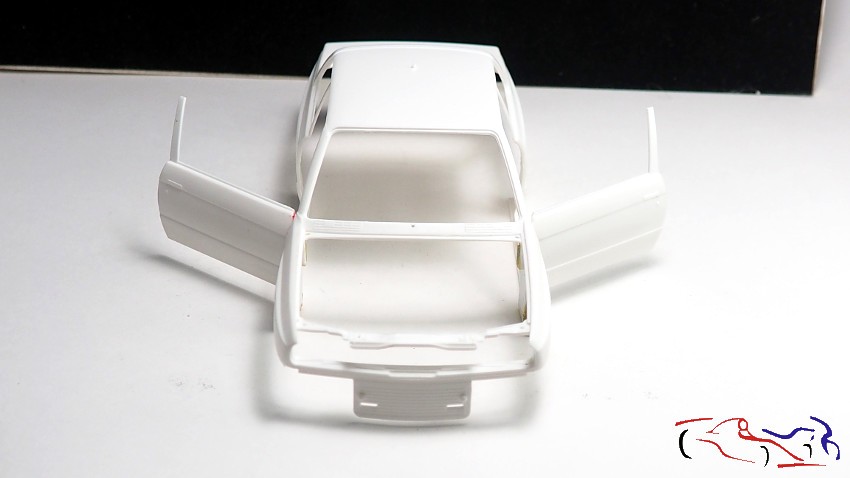
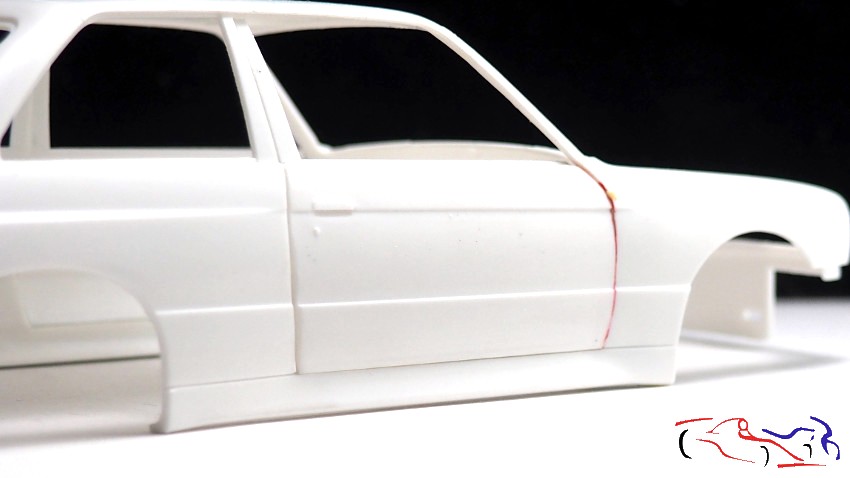
Continuaremos más adelante con las puertas, y mientras tanto, trabajamos otras partes del kit. En este caso, el paragolpes delantero. que tiene una muesca en la parte inferior, y que tapamos con putty de poliester:
We will continue later with the doors, and in the meantime, we will work on other parts of the kit. In this case, the front bumper, which has a notch at the bottom, and which we cover with polyester putty:
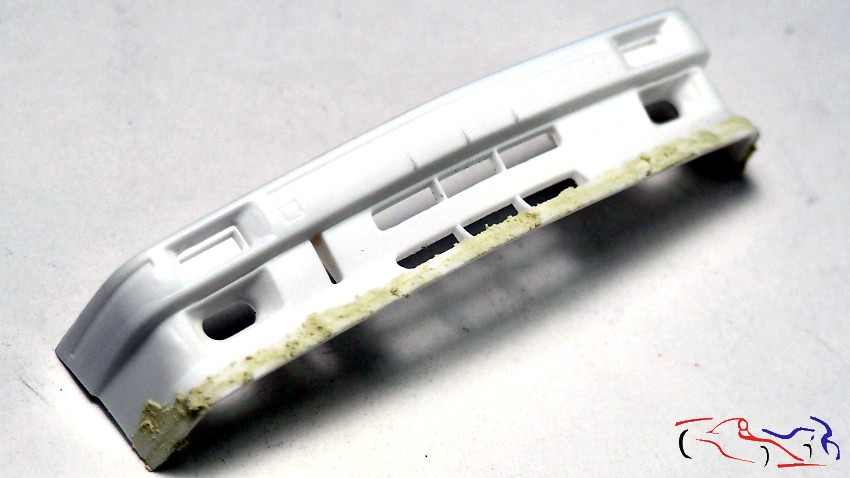
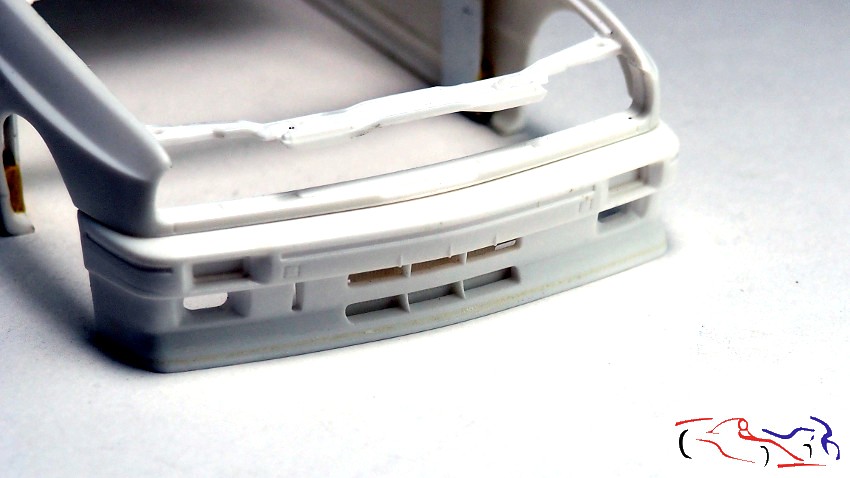
Y ya que estamos por esa parte delantera, vamos a modificar el tirante delanteros para colocar el sistema de apertura del capó. Basándonos en los trabajos de mi amigo Borja, y con la ayuda de una sierra de Tamiya, cortamos la parte delantera, colocando en su sitio, una plancha con laterales a modo de caja, donde irá el sistema de giro del capó.
And since we are on the front part, we are going to modify the front strut to place the hood opening system. Based on the work of my friend Borja, and with the help of a Tamiya saw, we cut the front part, placing in its place a plate with sides like a box, where the hood turning system will go.
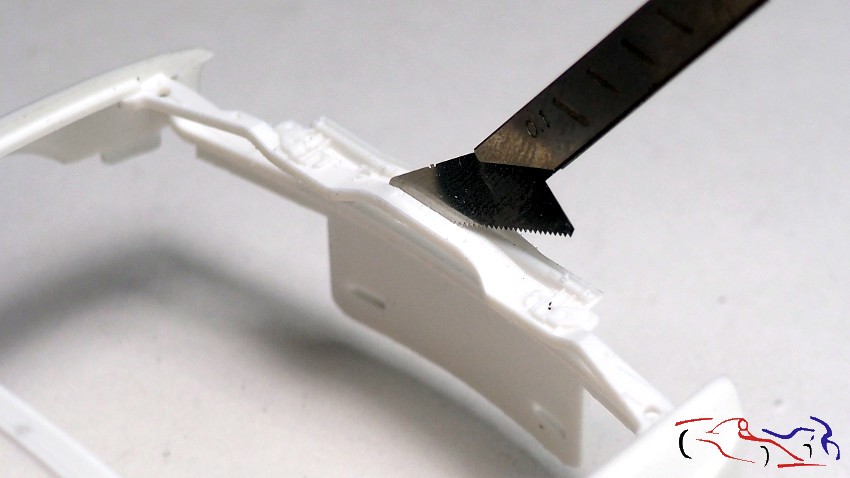
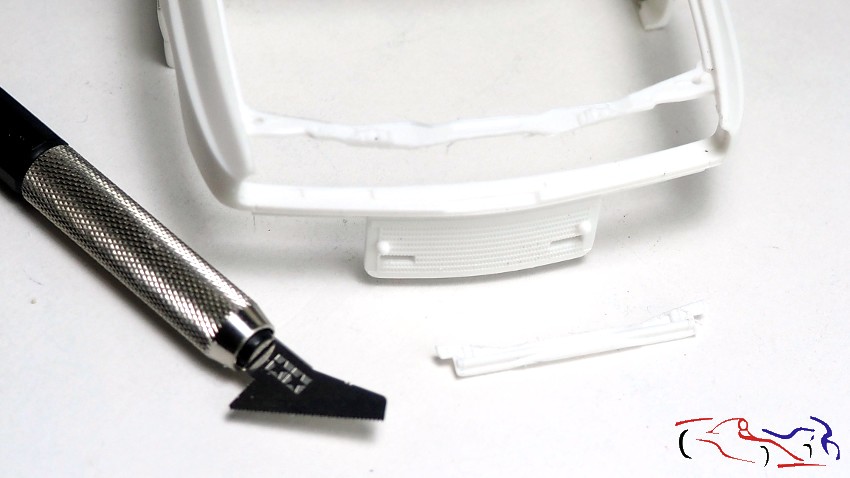
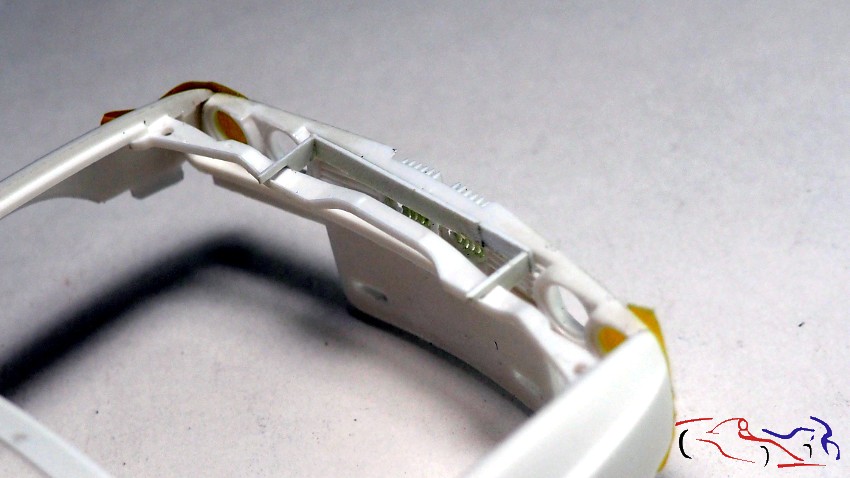
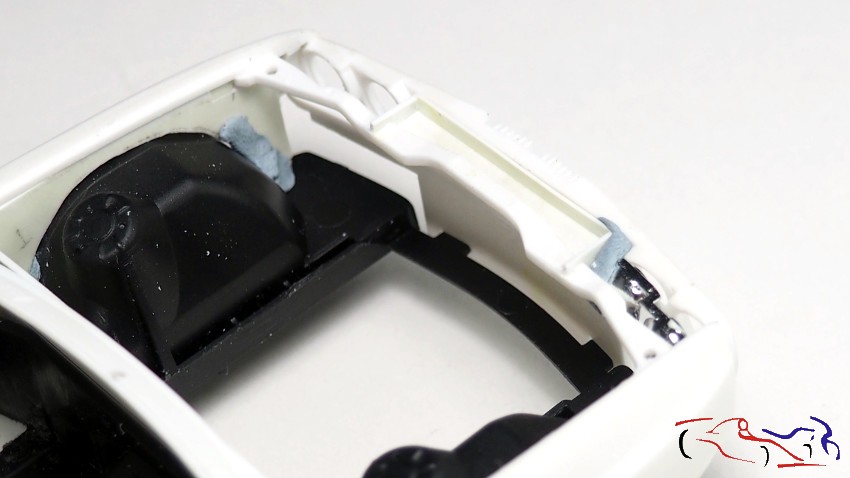
Y un poco más abajo, le abrimos lo huecos verticales de los riñones, lijando la parte de detrás con el minitaladro, y afinando después con limas. Deciros que uan falta afinar dichas aberturas:
And a little further down, we open the vertical spaces of the kidneys, sanding the back part with the mini drill, and then refining with files. I tell you that these openings need to be refined:
Otra tarea que hago siempre: buscar un lugar dond eponer la tuerca que fijará la maqueta a la base de la urna, pegada con ciano y bicarbonato, en un lugar donde no molesta y que no se ve:
Another task that I always do: find a place to put the nut that will fix the model to the base of the urn, glued with cyano and bicarbonate, in a place where it does not get in the way and cannot be seen:
Pasamos al habitáculo, cortando los laterales de la puertas y pegando el resto al cockpit. También he eliminado tanto el apoyo del pie izquierdo (tapado con una trooz de plástico blanco) como los cales que van a lo largo de la parte central del cockpit.
Moving on to the passenger compartment, cutting the sides of the doors and gluing the rest to the cockpit. I have also removed both the left footrest (covered with a piece of white plastic) and the rails that run along the central part of the cockpit.
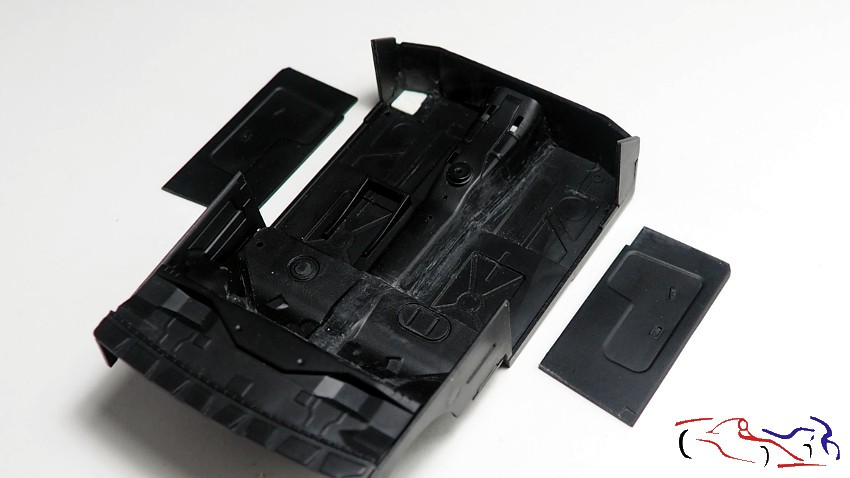
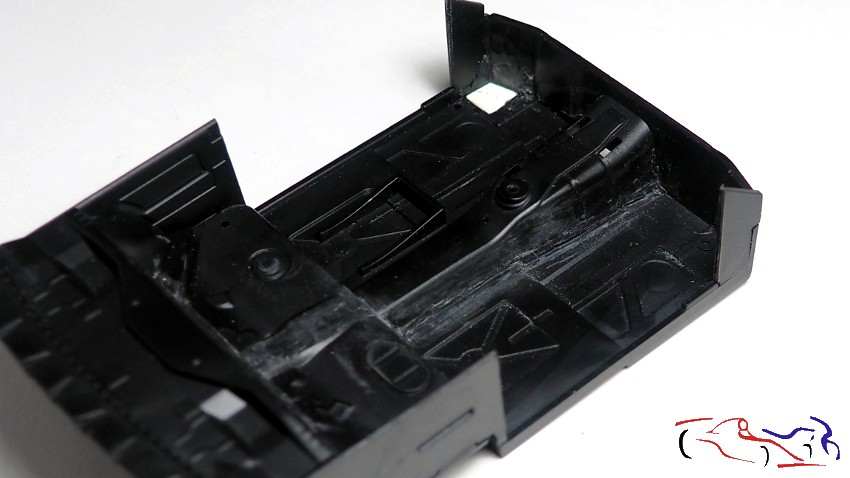
Y nos vamos hacia el hueco del motor, y su adaptación para incluir el motor. Deciros que de nuevo, la valiosa ayuda de Borja con su trabajo en otro BMW M3 ha sido fundamental para que yo pueda ir haciendo todo ésto. Ya tenemos el cortafuegos en su estado inicial, y los laterales, que son copiados de los que trae el TK del motor. Los prefijamso con Bluetack para comprobar su encaje.
And now we move on to the engine bay, and its adaptation to include the engine. I must say that once again, Borja’s valuable help with his work on another BMW M3 has been fundamental for me to be able to do all this. We already have the firewall in its initial state, and the side panels, which are copied from those that come with the engine TK. We pre-fixed them with Bluetack to check their fit.

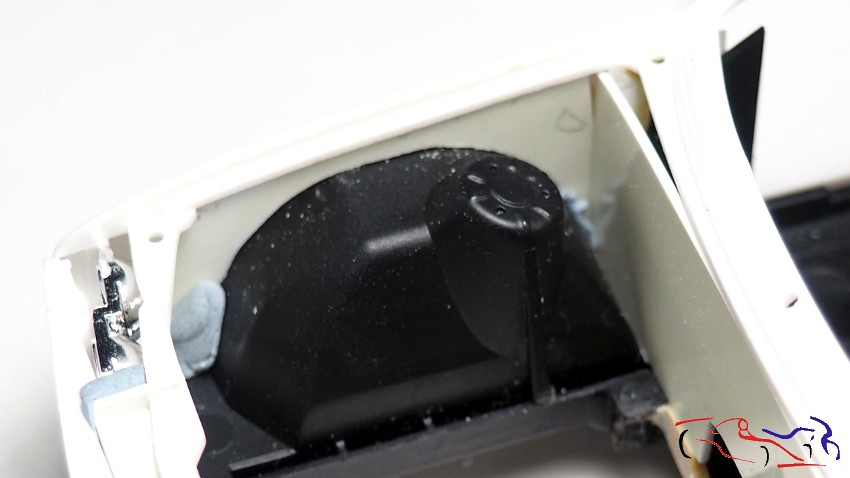
EN los laterales del vano motor, eliminamos los refuerzos que trae de origen, creamos unos más adecuados, y subimos los laterales pegando unas tiras como base, para ponerle después una plancha por encima. Se lija todo para que cuadre todo lo añadido:
On the sides of the engine compartment, we remove the original reinforcements, create more suitable ones, and raise the sides by gluing some strips as a base, to then put a sheet of metal on top. Everything is sanded so that everything added fits:
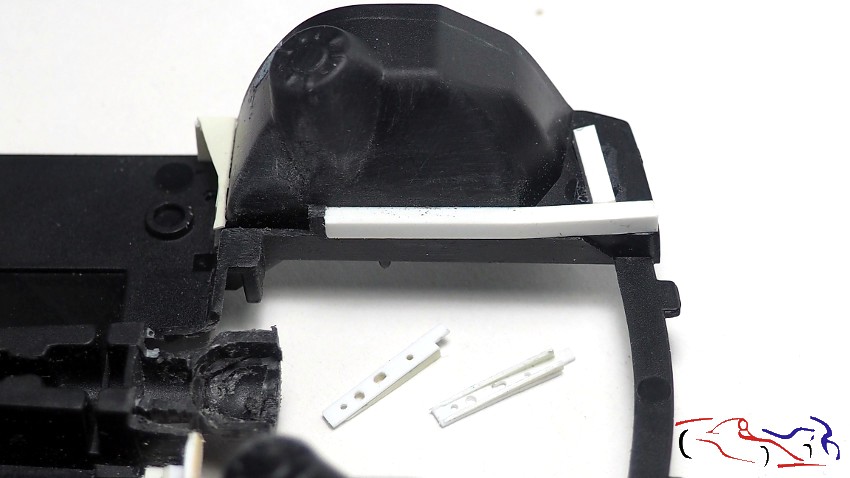

Y ponemos la carrocería para ver como cuadra todo. Al mismo tiempo, le recorto la parte de arriba al cortafuegos para adaptarlo a la carrocería, ya que no es un plano recto, sino que se va redondeando hacia detrás, por debajp del parabrisas. Y ese cortafuegos, tambien tiene alargado el tunel de la caja de cambios, como hizo Borja en su BMW:
And we put the bodywork in place to see how everything fits. At the same time, I cut the top part of the firewall to adapt it to the bodywork, since it is not a straight plane, but rather it rounds towards the back, below the windshield. And that firewall also has the gearbox tunnel elongated, as Borja did in his BMW:

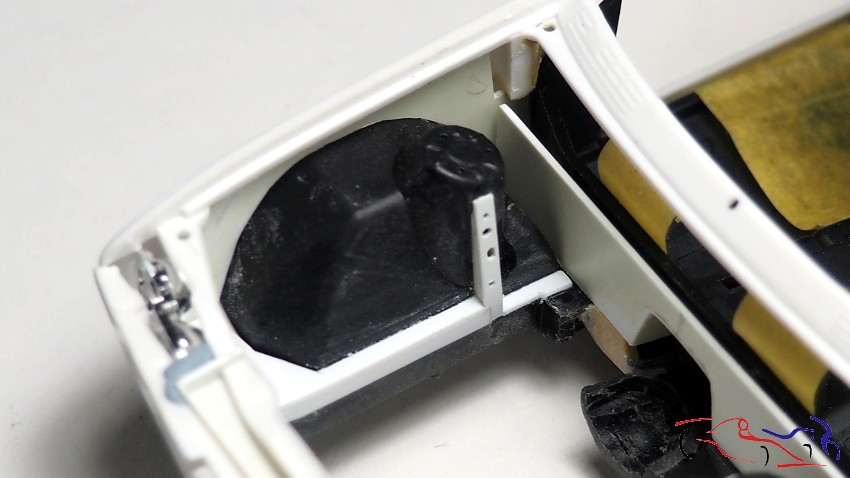
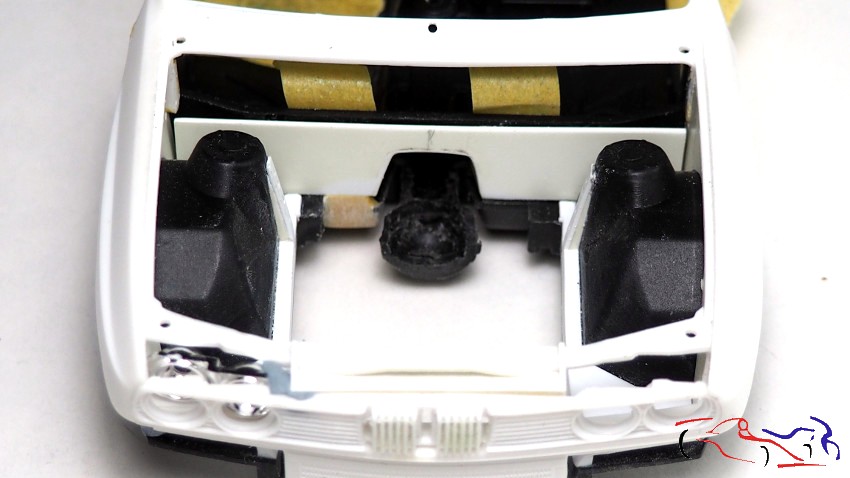
Por ultimo, y como paso previo a crear el armazón inferior del capó, relleno con masillas y lijo, los huecos que tiene:
Finally, and as a preliminary step to creating the lower frame of the hood, I filled the gaps with putty and sanded:
Aun necesita mucho trabajo, pero con la ayuda de Borja, que ha ido pensando y haciéndolo, es todo mucho más fácil, y rápido!! Gracias por ver y comentar!!
It still needs a lot of work, but with the help of Borja, who has been thinking and doing it, everything is much easier and faster!! Thanks for watching and commenting!!



